OPINIONS
Columnist Benjamin Burke reflects on keeping things in perspective and enjoying moments of serenity. A10

Columnist Benjamin Burke reflects on keeping things in perspective and enjoying moments of serenity. A10
Students and faculty gathered in Gasson Hall to build “bridges to success” for AHANA+ men at the second annual Men of Color Conference hosted by the Thea Bowman AHANA and Intercultural Center (BAIC).
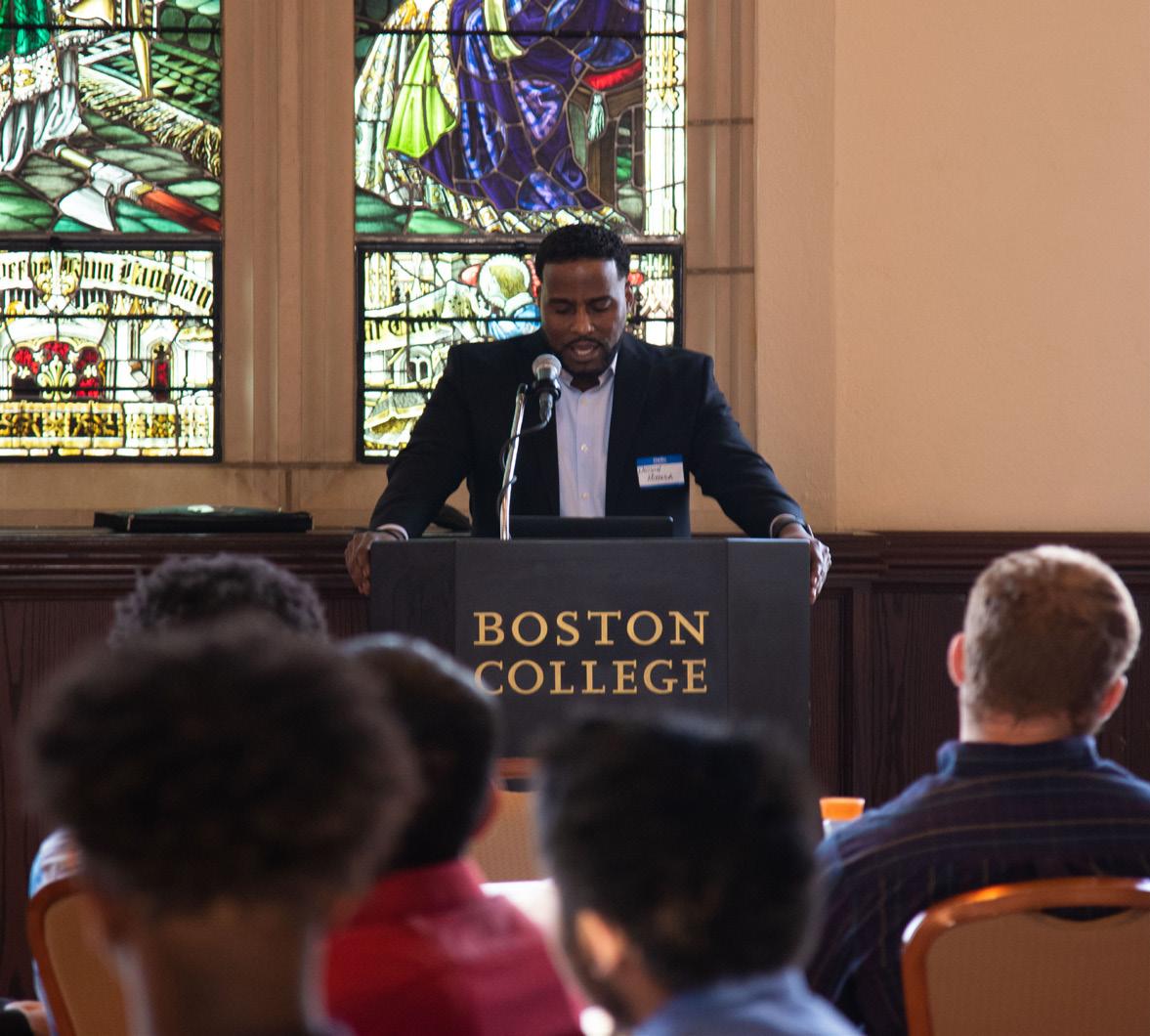
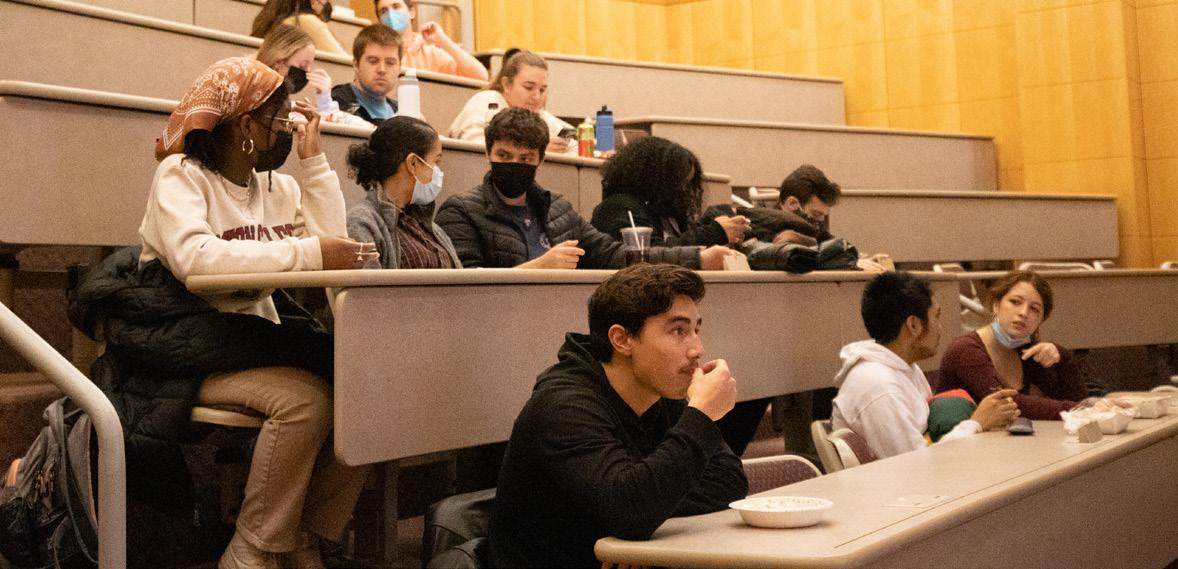
“Although we come from different places and are in different places in our lives, we are similar in our quest to become successful men,” said Richard Paul, assistant director of the African and African Diaspora Studies program at Boston College.
Speakers discussed racism, inclusion, mental health, and coalition-building throughout the event on Feb. 19.
See Conference, A2
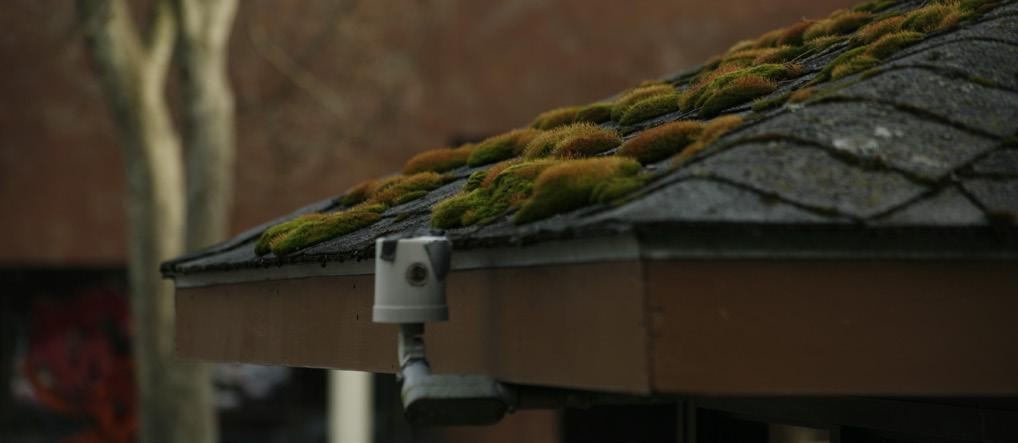
With 30 seconds left to play in Sunday’s matchup between Boston College women’s basketball and Wake Forest, friends, family, teammates, and staff inside Conte Forum stood up to show their appreciation for the five seniors on BC’s squad.
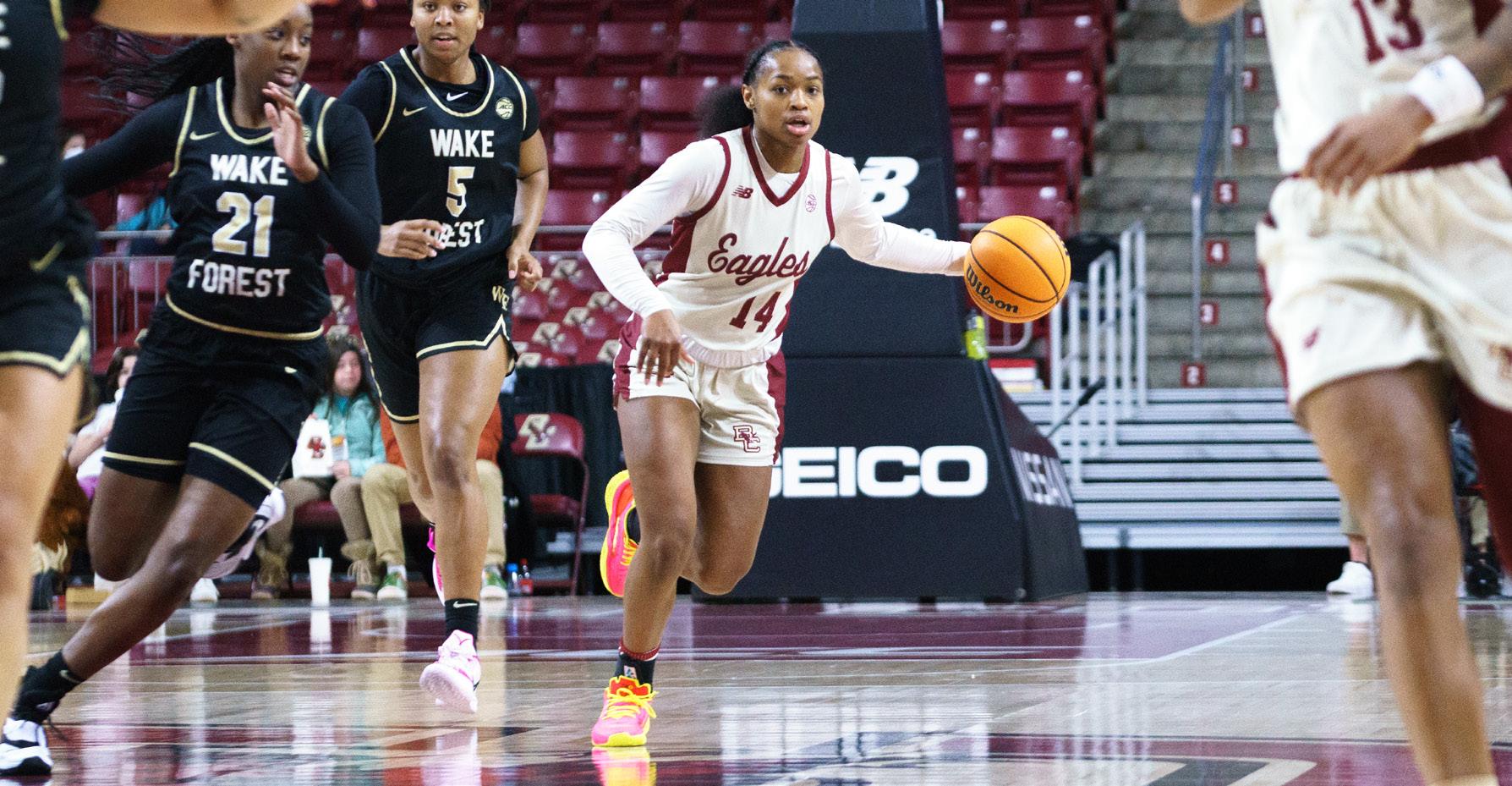
The closing five consisted of co-captains Taylor Soule and Marnelle Garraud, Makayla Dickens, Clara Ford, and Cameron Swartz.
“I love all my teammates I’ve ever had, but this group right here I’ve always
leaned on,” Soule said. “And I hope they knew they could always lean on me.”
The five seniors were honored with highlight reel videos and individual ovations throughout the game, as they guided BC (17–10, 8–8 Atlantic Coast) to an 82–70 win over Wake Forest (13–14, 3–13) on Senior Day.
After trading baskets with Wake Forest in the game’s first two minutes, BC held a lead for the duration of the game Saturday. Garraud started the Eagles’ hot streak with back-to-back 3-pointers.
BC’s energy was high to start the game, as all of its first nine points came from beyond the arc—six points

from Garraud and three from a Swartz 3-pointer.
Swartz was first to be honored in Sunday’s game. A mid-year transfer from Colorado in 2019, she quickly became a core piece of head coach Joanna Bernabei-McNamee’s team. Swartz leads the Eagles in scoring this season, averaging 15.8 points per game on 34.3 percent shooting from three.
On Sunday, she finished with 22 points on 9-of-15 shooting. She broke out in the second period and had 16 points heading into the second half.
Student artist Mikaela Savage creates distinctive drawings for ‘The Laughing Medusa.’ A8
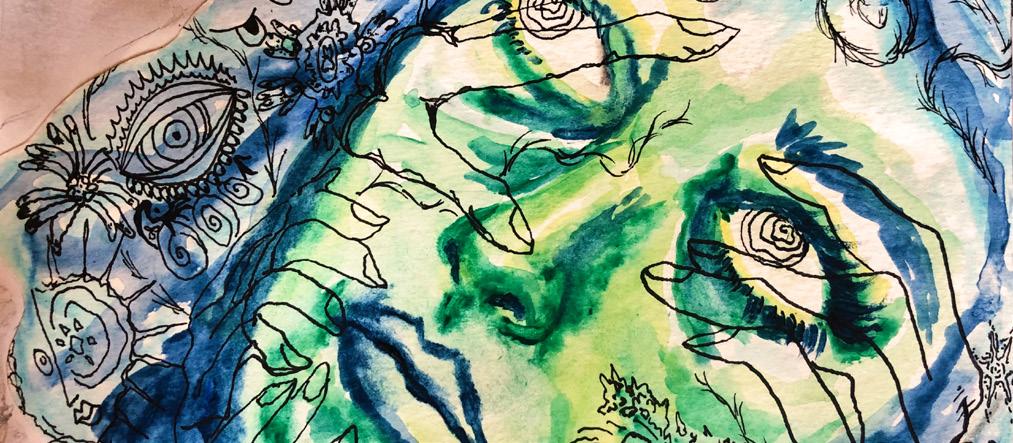
At 3 years old, Steve Pemberton was taken from his alcoholic mother and placed into the foster care system. He never saw her again. Instead, Pemberton went through many foster homes and eventually lived with a family who abused him mentally and physically for 13 years. Pemberton said he learned many lessons from his experience in the foster care system, which he describes in his novel A Chance in the World: An Orphan Boy, A Mysterious Past, and How He Found a Place Called Home.
“You never want to have your fate
and/or your destiny resting in somebody else’s hands like that,” Pemberton, BC ’89, said.
Today, he is the chief human resources officer for the Dublin-based software company Workhuman, a bestselling author, sought-after speaker, youth advocate, husband, and father of three.
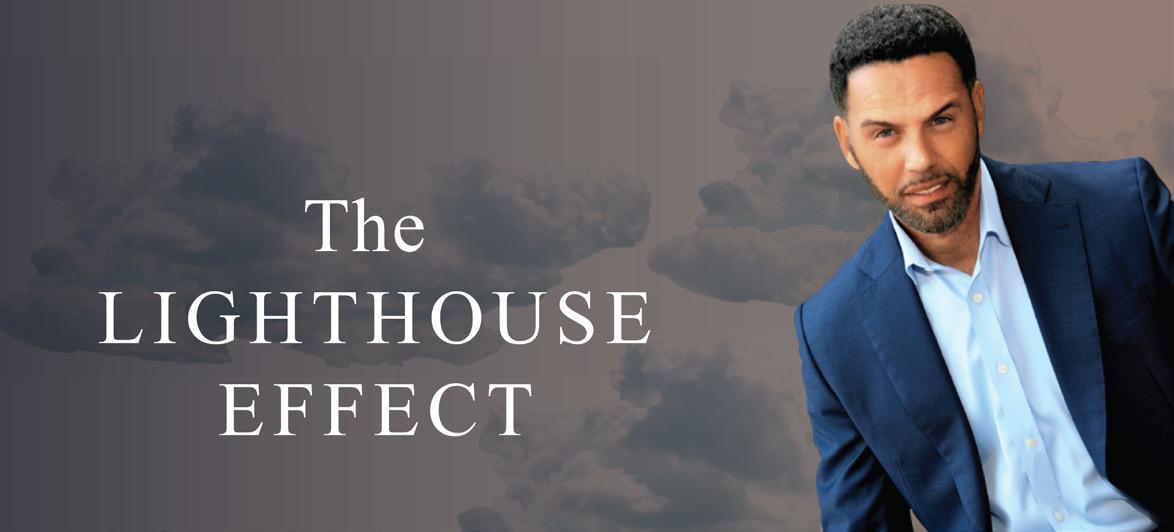
Pemberton, who grew up in New Bedford, Mass., discovered Boston College in the seventh grade when his guidance counselor handed him a brochure and suggested he look into it. Pemberton said his response was simply, “What’s college?”
See Pemberton, A6
The genesis of the FACES Council and Film Society of Boston College’s idea to collaborate was seemingly synchronous. FACES reached out to the Film Society in preparation for Black History Month, and the Film Society was immediately on board for the collaboration, having previously discussed plans to work with groups like FACES to explore racism in cinema.
The BC student organizations had similar aspirations to start a conversa-
tion about the depiction of marginalized identities in film and television.
The two student organizations planned discussions and screenings to address the intersection of identities—including sexual, gender, and racial identities—and their representation in movies and media over the course of February. Gathering in lecture halls and classrooms, members of both the Film Society and FACES analyzed the portrayal of specific marginalized identities and discussed how negative depictions can perpetuate stereotypes in mainstream culture.
3 p.m.
Keynote speaker Nelson Miranda, the vice principal of students at Boston College High School and BC ’96, said his most important life lessons came from his father.

“The learning I got from home, from my father, a Black man, is what really guides me from day to day,” Miranda said.
According to Miranda, education equals freedom.
To achieve this freedom, he attended BC as an undergraduate and then completed his master’s degree in the Lynch School of Education and Human Development in 2012.
Now, he fulfills his passion for education by working at BC High.
“I knew there was power in educating the youth, which is why I spent 20 years constantly mentoring and leading schools,” Miranda said. “I have worked with many
young men of all walks of life.”
Miranda highlighted his experience confronting racism, noting the harmful stereotypes that Black men face, such as young Black boys being viewed as troublemakers.
“When you’re Black, from my experience, your character is constantly under attack,” he said. “The uniqueness is different. Because of this, we can and must as individuals work at all times to recognize and overcome both the conscious and unconscious exploitation of human differences through the color of your skin, culture, and race.”
According to Miranda, it is incredibly important for AHANA+ students to hear experiences and stories from leaders once in their position, as these connections make a difference.
“I hope that my message was heard,” Miranda said. “I hope and trust that they will heed to it, because I wish as a student, I had
opportunities like this to hear folks speak who look like me, because it does make a difference.”
Participants of the conference engaged in various discussions, workshops, and panels focused on mental health, networking, and financial literacy.
Other speakers included Karl Bell, associate director of BC’s TRIO programs, which work with low-income students; Jeffrey Xie, a real estate advisor and BC ’20; and Bernard Adrien, a web maintenance and program support specialist at BC.
Christopher Carreras, MCAS ’25, attended the conference to share his experiences and gain new perspectives.
“I wanted to be able to … share my perspective [and] also learn a perspective that I might not be able to because of my experience on campus,” Carreras said.
Christian Hawkins, MCAS’25, came to the Men of Color Conference to connect with others that share similar backgrounds and hopes as well as to get advice on navigating BC.
“My reasoning for coming out today is really just to grow as a person and a man of color on a predominantly white campus,” Hawkins said. “What I mainly want to take away today is honestly just
to learn and navigate the space.”
To best navigate life at BC as a student of color, Miranda concluded that students should build and sustain authentic relationships.
“Build and sustain truly authentic relationships,” Miranda said. “Relationships that are characterized by truthful conversations and interactions that one can call liberating or transformative.” n
Boston College law students drafted a bill to reverse the 1984 happy hour ban in Massachusetts, but it is stalled in “purgatory” after being sent for further study in the state legislature.
strategically ‘safe’ to getting the ban removed, as it would give any final bill the breathing room it needs to incorporate concerns of the community,” he said in an email.
According to Charpentier, the ban needs to be reexamined, as its premise is outdated.
STEVE MOONEY / HEIGHTS EDITORAfter appearing on The Bachelor , Abigail Heringer, the show’s first deaf contestant, said online search results for cochlear implants soared.
“I remember seeing from the first night that search results for cochlear implants hit like an all-time high after the first episode,” Heringer said.
In a collaborative event hosted by the Campus Activities Board and the Undergraduate Government of Boston College Council for Students with Disabilities on Thursday, Heringer recounted her experience on the 25th season of The Bachelor , and later, the seventh season of Bachelor in Paradise

“I called my mom, and I was just like, ‘What do you think of this? Would you be okay if I went on the show?’ ... and she was just like ‘Yeah, if you share your story and someone can relate to it and it helps them, then it would definitely be worth it,’” Heringer said.
The Bachelor is a competitive environment where it is difficult to maintain one’s confidence, she said. So, Heringer said she felt empowered after immediately telling the bachelor, Matt James, about her cochlear implant.
“I did what I once thought was the scariest thing when it comes to dating, and doing that, in the first two minutes, I can take on whatever is next to come,” she said. “I just felt like I could truly be myself in that situation.”
Heringer said though she authentically expressed herself on the show, there were still challenges in the competitive environment.
“It sucks, obviously, when you get rejected … but if you put everything out there, you can’t really have any regrets about it,” she said.
After her season of the series aired, Heringer said she went from 800 to 70,000 Instagram followers. Heringer also said although the large following can be overwhelming, it is rewarding to use her platform to advocate for the deaf community.
Beyond continuing the conversation about the deaf experience, Heringer said her other goals include finding ways to gain more representation for people with cochlear implants in the mainstream media.
Heringer said that growing up she always had a positive outlook on her disability. Since her older sister was also born deaf and lives with a cochlear implant, Heringer said she felt comfortable with her diagnosis, seeing her sister as a role model.
But, middle and high school were turning points, Heringer said. She began to feel less confident in herself and in her disability.
“You have fully hearing individuals, or you have completely deaf individuals that use sign language, but then you don’t have a lot of people like me with cochlear implants, and so it was really hard feeling a loss of identity and a sense of ‘Where do I fit in?’”
Read the rest of this story at www.bcheights.com
“It’s going to stay in purgatory forever until we drive interest, start a grassroots kind of activism, and get people to recognize the power they have in a democracy to use their voices for what matters,” Jordan Michelson, a co-author of the bill and BC Law ’22, said.
BC Law students—Michelson, Maxwell Black, James Hendren, and Thomas Charpentier—wrote and co-sponsored Bill S.169 to oppose the 38-year-old ban. Emily Smith, a BC Law student, and Evan Michelson also co-sponsored the bill.
Massachusetts Senator William Brownsberger presented the bill, titled An Act Concerning Restoring Happy Hour to the Commonwealth, to the state legislature.
The Joint Committee on Consumer Protection and Professional Licensure sent the bill to further study, halting the bill’s progress after it did not collect enough signatures to appear on voters’ ballots in December.
“The bill has been presented before the MA House of Representatives, and we have learned how lengthy a process this is,” Charpentier, BC Law ’22, said. “As far as I know it is still making its way through the legislature, waiting to sing its story on Capitol Hill in Schoolhouse Rock.”
The original goal of the bill was to develop a commission to further analyze the views of the Boston community surrounding the happy hour ban, Charpentier said.
“This seemed more constructive and
“Concerns of the community are the core foundation of the ban itself,” Charpentier said. “It was put in place as a reactionary measure to a tragedy, has not been reexamined with changing times, and is completely out of touch with the realities of rideshare-based transportation.”
Michelson said the original law responded to drunk driving accidents in Massachusetts.
“The ban was passed at the height of the drunk driving era,” Michelson said. “There weren’t seat belts in cars, people didn’t think twice about getting behind the wheel, 18 was the drinking age, and there were a number of accidents that were high profile.”
Paulo Barrozo, an associate professor at BC Law, said the original law was intended to curb drunk driving accidents.
“What it basically prohibited was promotions that discounted the price per unit of alcoholic beverages or the use of alcohol as prizes and other promotions,” he said.
Michelson said new restrictions on drinking and the implementation of “dram shop” laws—which makes bars potentially liable in cases of drunk driving—render the happy hour ban obsolete.
“[Massachusetts] had the best of intentions [with the ban],” he said. “This was really our contribution to the national conversation, and it didn’t work. That’s okay.”
Read the rest of this story at www.bcheights.com
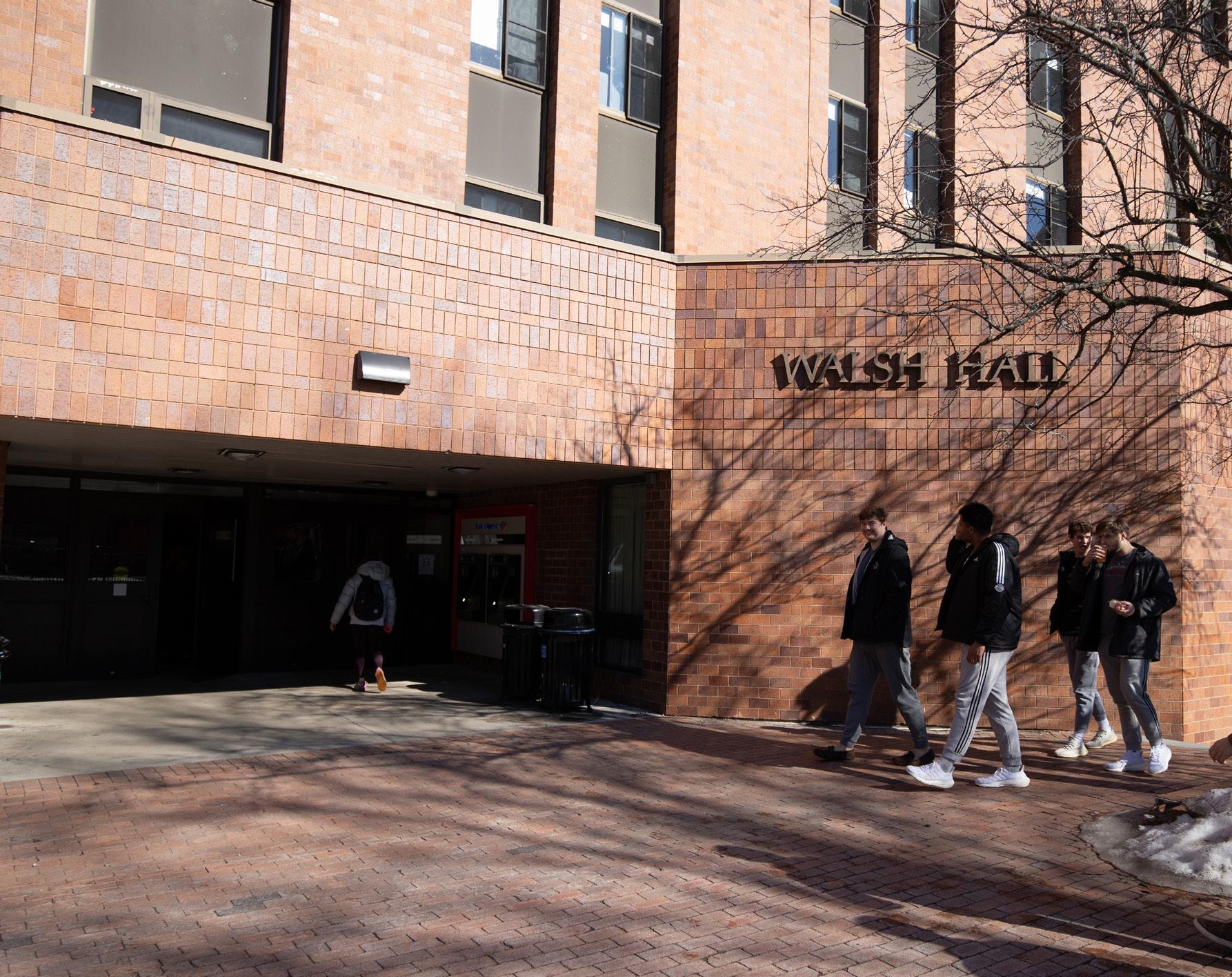 B y A my P A lmer Assoc. News Editor J uli A K iersznows K i Special Projects Editor s ofi A l AB oy Asst. News Editor
A nd B e T h V erghese Asst. News Editor
B y A my P A lmer Assoc. News Editor J uli A K iersznows K i Special Projects Editor s ofi A l AB oy Asst. News Editor
A nd B e T h V erghese Asst. News Editor
Sofia Megale jolted awake in her dorm room in Walsh Hall to something repeatedly brushing against her shoulder.
“I woke up to Sofia screaming her head off,” said Caroline Shannon, Meagle’s direct roommate and MCAS ’24. “I thought it was like a terrible, terrible nightmare.”
Hearing the commotion, one of Megale’s suitemates burst through the door and identified a flying creature—a bat.
Megale, MCAS ’24, said she and her roommates left their suite on Feb. 10 and waited in the hallway as Shannon got their RA, who then made calls to the Boston College Police Department (BCPD) and BC’s Facilities Management.
Around 20 minutes later, Megale said facilities arrived and captured the bat.
“The guy was holding the bat in a towel, and you could see its fangs and everything,” said Avery Boniface, one of the suitemates and MCAS ’24.
The roommates told facilities the bat should be tested for rabies, since Shannon was asleep in the room with the creature and it touched Megale repeatedly, Shannon said.
“I made it clear to them … that I was touched by it, and that it’s not safe to let it go because we would just have to get rabies shots then,” Megale said.
A Walsh RA said facilities agreed to place the bat in a bucket and later bring it to BCPD after the Walsh 8 residents and their parents—who the students were speaking with on the phone during the incident—expressed concern about getting the bat tested for rabies.
“Their parents wanted to make sure that their kids were safe, and they really thought that getting it checked [for rabies] was the best thing to do,” she said. “The girls were very adamant about getting the bat tested, and I don’t know what ended up happening, but I really hope they were able to.”
The following morning, Shannon said she went to BCPD’s office in Maloney Hall but was told it had no record of what happened and to call facilities.
According to Shannon, facilities told her to call back later. Megale said another roommate called facilities later that day, which said it had released the bat.
“We were … a little bit shocked they did that because we had been so adamant the night before that [they] could not let it go,” Megale said.
Jack Dunn, associate vice president for University communications, said that the students informed facilities they had not been bitten by the bat.
“They were offered support from their RA and told to contact University Health Services, which instructed the students the following morning to get tested for rabies,” he said in an email.
According to Philip Landrigan, director of BC’s global public health program, if a bat is found in a room, you must presume it is infected with rabies.
“Especially if it’s a situation where people are asleep, or semiasleep, you have to presume that they have had contact with a bat and perhaps even a bite,” Landrigan said.
Facilities’ decision to release the bat aligned with its standard wildlife protocol—though BC is now changing this policy, according to Dunn.
“Admittedly, Facilities has not had a lot of experience in dealing with bats inside of the residence hall room,” he said. “Moving forward, Facilities will make it their policy to contact Animal Services in Boston or Newton should a similar incident
occur in the future.”
Facilities did not respond to a request for comment.
Landrigan said that standard protocol for a potential rabies contact is to capture the bat and notify public health authorities.
“It’s standard protocol with a potential rabies contact to capture the bat and get it into the hands of public health authorities,” he said. “It doesn’t always happen for practical reasons, but that’s the ideal protocol.”
Any contact with a bat has to be taken seriously, as even the most minute scratch from a bat can potentially transmit rabies, Landrigan said.
“This is a very serious situation,” Landrigan said. “You have to presume in this circumstance that both of these students had contact with the bat, and if they have not immediately started … postexposure prophylaxis [treatment], they must begin it ASAP—this is a real medical emergency.”
Shannon and Megale are now receiving rabies vaccines at St. Elizabeth’s Medical Center for their
potential exposure.
According to the CDC, the treatment for potential rabies exposure—or postexposure prophylaxis—includes a dose of human rabies globulin and rabies vaccine given on the day of exposure, and then additional vaccine doses on day three, seven, and 14.
Shannon and Megale will make five trips to the emergency room to receive their shots, which will be fully covered by insurance for Meagle, but cost Shannon around $1,250 in copays.
Mark Pearlmutter, the chairman of emergency medicine at St. Elizabeth’s Medical Center, said they will almost always treat someone for rabies if they woke up with a bat in their room—as Megale and Shannon did—regardless of whether there is a bite or scratch mark.

“We generally will treat someone who comes in who says they woke up with a bat in their bedroom,” Pearlmutter said. “And the proper way to handle this is to bring in a public health officer, an animal officer, that can actually find the bat, trap the bat, and then check it for rabies.”
Ann Scales, the director of media relations for the Massachusetts Department of Public Health, said in an email that if a person had contact with a bat in which a scratch or bite could not be ruled out, it is the state’s public health recommendation that the bat is sent to the state public health lab to be tested for rabies.
Pearlmutter said though it is very rare, there have been a few instances in the country where transmission of rabies occurred after someone woke up with a bat in their room and saw no visible abrasion.
“They did not have any signs of being bit or scratched—and that’s not infrequent, by the way— and there were one or two cases where folks did get rabies,” he said. “So that shifted a lot of the treatment recommendations to lower the threshold in those instances and actually administer the immunoglobulin for rabies as well as the vaccine for rabies.”
Shannon said it felt irresponsible for facilities to release the bat because it compromised her and Megale’s safety.
“Now Sofia and I have to deal with this,” Shannon said. “We’re right at risk for a fatal disease, and we’ve just spent all this money to go through this, get nine shots, so that we don’t have rabies.”
Rabies is almost always fatal if left untreated, according to Pearlmutter.
“If you actually do get infected, the mortality rate is extremely high,” he said. “And once it’s taken its course, meaning once it’s actually entered into your body, while there is some supportive treatment, it’s a very lethal disease process.”
Shannon said she wishes facilities or BCPD would have told her to call a regular exterminator if they were not going to keep the bat for testing.
“We are told that when we have an animal or something in the dorm, we’re supposed to call maintenance and BCPD, and I think … if they’re unable to handle keeping a bat overnight so we can get [it] tested for rabies, which is the number one thing that you’re supposed to do [in this situation] … they shouldn’t be doing that job,” Shannon said.
BCPD did not respond to a request for comment.
According to Landrigan, the students would need to get treated regardless of whether the bat had rabies.
“They still would have had to have been treated because it takes a few days to examine the bat and you don’t dare to wait a few days before you initiate treatment, so it would not have changed the treatment that the girls received,” he said.
Megale wishes she was given clear and explicit answers during the situation.
“A bat landed on me multiple times and there should be someone … making me feel reassured and not in danger,” she said. “And I feel like there’s just a lack of that.”
The Office of Residential Life did not respond to a request for comment. n
Newton Mayor Ruthanne Fuller announced an end to the city’s indoor mask mandate, garnering a range of reactions from Newton residents.
“I’m nervous,” one Newton resident said. “It feels like ‘Oh, everybody is gonna take their mask off, and you’ll be back in supermarkets and things like that, and I don’t feel comfortable with that. I don’t feel ready, but I don’t know in terms of the science if it’s a good idea or not.”
Effective Feb. 18, Newton residents can enter public spaces without masks for the first time since Sept. 2, 2021. Fuller said that businesses and employers maintain the right to require masks and that individuals may choose to wear masks as they please.
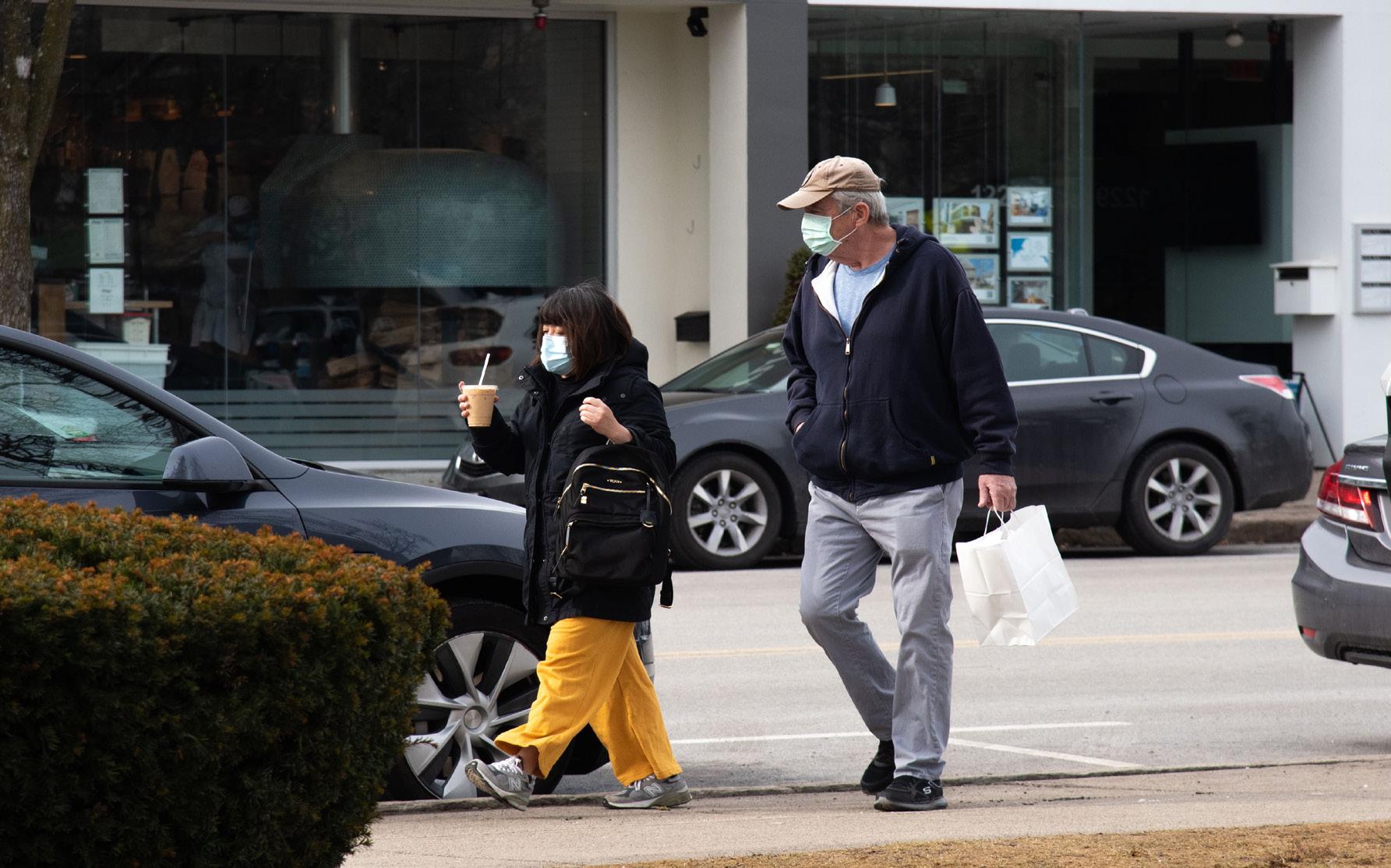
“I do think that her lifting the mandate for indoor masking wouldn’t change how I mask myself,” said Newton resident Daisy Dai. “If other people chose not to wear their masks, I would still be wearing mine.”
Fuller and Newton Health and Human Services Commissioner Linda Walsh cited several guiding factors for their decision to rescind the mandate, including high vaccination rates, a decline in positive cases, and the availability of at-home tests. The Newton COVID-19 dashboard reported a positivity rate of 2.76 percent through Feb. 16 and
a vaccination rate of 88 percent as of Feb. 15.
“I think [Newton is] among the stricter towns in the state,” Dai said. “I feel like mostly everywhere I go in Newton, people are pretty good at maintaining social distance and wearing masks whenever they could.”
Dai, however, noted some room for improvement, particularly within schools.
“They were kind of not able to come up with a solid plan of how [to reopen schools] compared to some of the other neighboring towns that are equally well-funded in general,” Dai said. “I think a lot of working parents need that. The kids needed that as well—to go back to school and learn—because I do think it had a major impact on some of the learning and also social skills.”
Newton Public Schools (NPS) made plans to release updated safety guidelines from the medical advisory group by Feb. 18, though NPS had not released the plan as of Feb. 20.
Effective immediately, however, there are no limits on the number of spectators for athletic competitions or fine arts performances at NPS.
Spectators are required to follow existing NPS masking guidelines and stay home when sick or if they are exhibiting any symptoms of COVID-19.
Newton’s decision to lift its indoor mask mandate comes as more states and cities nationwide begin to ease pandemic restrictions. The
Washington Post ’s coronavirus
tracker shows that, as of Feb. 20, U.S. cases have fallen by 40 percent, deaths have fallen by 8 percent, and hospitalizations have fallen by 22 percent in the past week.
“I think, given the precipitous drop in cases and, for that matter, hospitalizations and those kinds of markers, along with measuring the sewage, it’s getting close to that time [to lift the mask mandate], ” said Robert Gracey, a local resident. “I think we’re getting closer to the endemic stage versus the pandemic stage.”
Newton resident Lin Shi said that Newtonians must face the fact that COVID-19 will likely continue to be a part of their day-to-day reality.
“COVID probably will not suddenly disappear,” he said. “I think people have to learn how to live with it, so it’s not that you want to or don’t want to, but that’s the reality. We have to watch how this develops and then come up with smart ways to deal with it.”
Despite the widespread hope to start treating COVID-19 as an endemic disease, some public health experts still caution against
prematurely relaxing pandemic safety measures, according to The Washington Post
he Centers for Disease Control and Prevention reported that 92.61 percent of U.S. counties still have “high” community transmission of the virus.
As of Feb. 15, the Massachusetts Department of Public Health advised that a fully vaccinated person should wear a mask if they have a weakened immune system or are at increased risk for severe disease, or if anyone in their household is at risk or unvaccinated.
A housing development in Newton Upper Falls would offer over 100 affordable housing units and attract businesses to the area, said Peter Standish, a senior vice president at real estate equity firm Northland, at an Area Council meeting on Thursday.
But some Newton residents expressed concern with the proposed development, citing potential strains on area roads and transportation.
“Needham Street is already over-
packed,” Karen Slifka, an area resident, said. “The 800 [units at another development] is already too much, and now you’re saying 400 on top of that. It’s not good for Needham Street—I live here right off of it—so it’s not good.”
In addition to the 103 affordable housing units, the eight-story development would consist of an additional 307 apartments, according to Standish.
The development would be in compliance with Massachusetts state statute 40B, which specifies that at least 20 to 25 percent of the units
at the new development will have restrictions preserving the units’ affordability in the long term.
The development would occupy a seven-acre property wedged between Charlemont and Christina Streets behind the Marshalls store at 260 Needham St. The property is currently occupied by two industrial buildings, Standish said.
It would also include 495 parking spaces, according to Standish. All but 18 of the spaces would be underground, he said.
“Pushing that parking underground allows us to create this open
space,” Standish said.
Standish said the development also includes two commercial spaces. A proposed 8,000-square-foot commercial space would border Charlemont Street. Another proposed 2,000-square-foot space for recreation-oriented businesses borders Christina Street, he said.
“And the idea with these pieces are, particularly with Charlemont Street, is to really help activate Charlemont Street and be able to attract a use that that really is sort of conducive to that type of activity,” Standish said.
One side of the property runs alongside a large residential area. The proposed building would be shorter near the neighborhood than it is on Needham Street, according to Standish.
“The intent that we’ve taken with this designer to really try to push back the building footprint against the retail buildings along Needham Street, so really to create ... a green space buffer with the residential neighborhood,” he said.
Standish said the development would include greenways and outdoor recreation spaces, in addition to a pedestrian and bike path connecting Charlemont and Christina Streets.
The property sits next to the Charles River. An abandoned rail bridge spans the river nearby,
Standish said. If the bridge gets rebuilt, he said, the pathway included in the development could connect Newton and Needham, which sits on the other side of the river.
“[A rebuilt bridge] creates all sorts of opportunities in terms of connecting in recreational opportunity, both on the Newton side and on the Needham side,” Standish said.
One meeting attendee said he liked the recreational opportunities that the project offered. But, he said, the project could overload the Green Line of the MBTA, in addition to area roads.
“I love how you’re looking to tie in the rail trail and create other bike trails to get over towards Wells Avenue, et cetera,” the attendee said.
“But I think the key—certainly from a Village Falls perspective, and that’s what I’m representing—the key concerns are going to be traveling.”
Stephen Buchbinder, a Boston-area real estate lawyer, said the new project is still at the very beginning of the development process. Buchbinder said he hopes a site approval application will be filed with MassHousing, an agency that finances affordable housing in the state, by the end of February.
“This is still very much the beginning of the stage, and we do anticipate holding [a] broader community meeting sometime in March,” Buchbinder said. n
 VICTOR STEFANESCU / HEIGHTS EDITOR
VICTOR STEFANESCU / HEIGHTS EDITOR
Recent winter weather in Newton has created ideal conditions for potholes to fill the city’s streets, according to Newton Mayor Ruthanne Fuller in a Feb. 6 newsletter. The Newton 311 app, which compiles work orders throughout the city, also addresses the potholes.
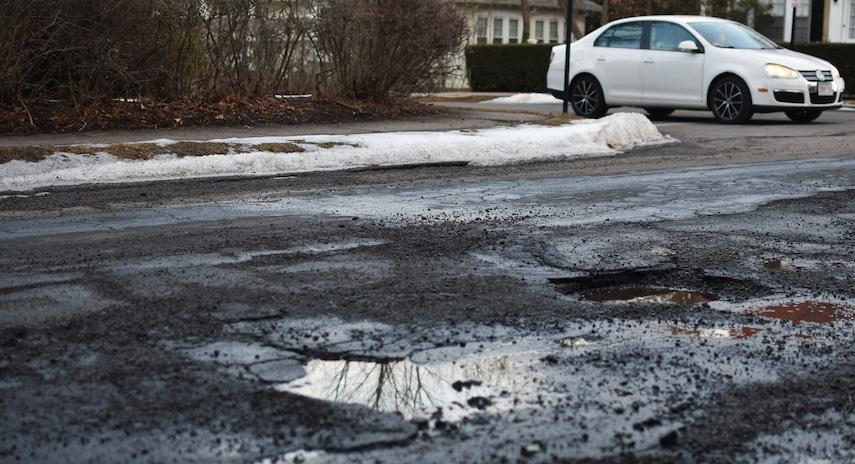
Introduced in 2008, the service allows around-the-clock access to government representatives, said Garrett Ross, manager of customer service for the City of Newton.
“[Newtonians] are able to use [the service] through the web, through an app on their smart device, or by calling customer service, and we pretty much put in any kind of concerns that they have into the system,” Ross said.
The Newton 311 app and website offer a wide range of services, including filing work orders for street issues, ticket appeals, and yard waste. When the city receives a message through the 311 service, government employees go to the reported scene and determine its level of importance, according to Ross.
The app, called “Newton MA 311,”
has a simple interface. Four options are on the homepage of the app: an option to look at the latest news from the city, the ability to make a request, a service center, and a button that is a speed dial
provide more details in a text box at the bottom of the page.
Around 75 percent of the messages that go through the “make a request” process in the 311 system are related
more reported issue on the 311 system, according to Ross.
GovQA, a software company, created the 311 service for the city. In the past 14 years, GovQA’s main improvement
to Ross.
“A number of residents felt as if information was put into the system but they rarely received their information back, [so] we did a major communications overhaul,” Ross said. “So the enhanced communication that we recently did allowed us to do some automated emails based on changing of statuses.”
The new customer service process is only a temporary solution to the problem of residents feeling out of the loop, according to Ross. It does, however, allow the person filing a work order to receive updates as the city addresses their report, he said.
Fuller’s newsletter from Feb. 3, as Ross noted, outlined the 311 service’s instrumental role in fixing potholes. While potholes are inevitable, they are fixable with the help of residents, Fuller wrote.
to city offices.
After selecting the “make a request” button, users can enter in the location of the incident, specify its nature, and
to trash, recycling, or yard waste issues, Ross said.
Recently, though, this pattern has changed, as potholes have become a
to the service has been removing bugs and glitches. More recently, the city worked to improve the user experience of the reporting process, according
“Please be our eyes out on the roads,” Fuller wrote in the email. “The fastest way to make a report (which can be done anonymously) is to download the Newton MA 311 app if you have a smartphone. …Take a photo of the pothole and send in a report right at the spot.” n
Newton leaders presented ideas for legislation to reduce emissions and promote renewable energy in city residences and businesses at a Zoom meeting Monday night in a discussion on the Climate Action Plan.
The plan, according to the City of Newton’s website, is the city’s proposal to become carbon neutral by 2050. It aims to encourage residents to power their homes with renewable energy, purchase electric cars, insulate houses, and switch to electric heat pumps, according to the website.
The committee began by discussing the Building Energy Reduction and Disclosure Ordinance (BERDO). The City
of Boston passed the ordinance in May 2013 to set greenhouse gas emission regulations and reporting requirements for large commercial buildings. Ann Berwick, co-director of Climate and Sustainability for the city of Newton, recommended initiating BERDO in Newton to the Zoning and Planning Committee.
“[BERDO is] not an electrification mandate, but a performance standard,” Berwick said. “What’s really different about BERDO is that it not just addresses new construction, it addresses existing buildings.”
Berwick also recommended the Lexington model to the committee. She said the City of Lexington is working on a model to motivate residential building owners to install solar energy sources. The model would limit the buildings’
capacities unless the owners agree to turn toward more green initiatives for their buildings, Berwick said.
“Under the [Lexington model] approach, … in order to build to a certain amount of feet, you’re going to have to electrify and install a certain amount of solar,” she said.
Berwick argued that the plan is so new that it is unclear whether state intervention could become an issue, she said.
“Lexington believes … that the town has authority to do this without state permission,” she said. “It is unclear to me, but they may be right.”
Berwick also discussed the possibility of implementing a Home Rule Petition, which she said would give Newton the power to limit fossil fuel use in residential buildings.
“[It would] allow the city to require all new construction and major renovations to be electric with some exceptions,” Berwick said. “The current version … accepts emergency and backup standby power.”
The city changed the petition draft, Berwick said, in order to work cohesively with BERDO.
“Initially, the city’s draft of the Home Rule Petition was residential and commercial—all buildings, essentially,” she said. “We’ve now taken large commercial out of the draft because BERDO covers commercial buildings.”
Berwick’s last recommendation to the committee was Bill HD.4755, proposed by Massachusetts State Representative Kay Khan of the 11th Middlesex District in which the City of Newton resides. The bill would bypass the bureaucracy of the
Home Rule Petition but accomplish the same goals, Berwick said.
“The bill would do away with all the Home Rule Petition rigmarole, and it would require state-wide that all new construction and major renovations be all electric,” she said. “Basically, it says ‘Get to net zero by 2050 and do it your own way.’”
Berwick concluded on a positive note, leaving the committee with a motivating message to engage with community members in accomplishing environmental goals.
“We really want to emphasize the importance of outreach to the community and participation,” she said. “These are big changes. Lots of other cities and states are moving in this direction. People are going to want to talk about them and understand them.” n
Crown Cafe—a family-owned Watertown staple for years—brings unique Persian flair to the classic all-American diner and recently reopened after coming under new management and a series of renovations.

“I wanted to do mostly mainstream
American breakfast and lunch with a little bit of Persian, you know, hints here and there,” said Sepehr Madani, the new manager at Crown Cafe.
With a smaller, simplified menu, Crown Cafe added some authentic Persian dishes to the menu, attracting both regulars that have been coming to the cafe for years as well as those looking for a bold take on diner classics.
“The previous owners had a super big menu with items that not a lot of people were ordering,” Mandani said. “So in terms of inventory and keeping things fresh, we eliminated a lot of that, which also allows us to introduce some Persian food to the menu.”
New menu items such as the Persian kebab, sholeh-zard—a type of saffron rice pudding—and Persian spinach omelets have been doing exceptionally well, especially among customers that have no prior exposure to Middle Eastern food, according to Mandani.
Customers craving more of the oldschool diner staples can count on omelets, pancakes, BLTs, subs, and sandwiches. The Crown Burger boasts a handmade half-pound patty topped with traditional lettuce and tomato and finished off with the restaurant’s homemade Crown Sauce.
Since taking over the diner in September, Mandani said his team spent about three months renovating everything from the dining area to the kitchen equipment and the decorations, hoping to curate a
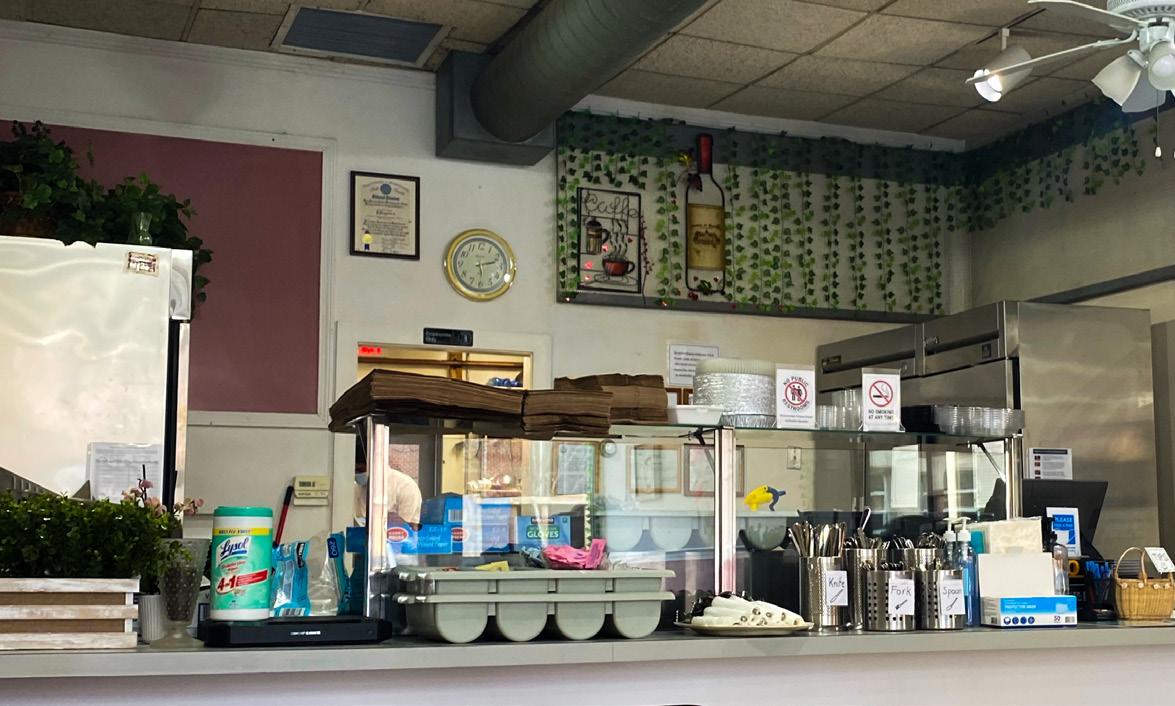
more modern energy that can cater to a wide variety of customers.
“We wanted to make the restaurant look more inviting, and without even changing our signage outside, we’ve noticed that even the little changes we’ve made have expanded our clientele to a younger crowd,” Mandani said.
The cafe now features an open-concept interior with a warmer atmosphere.
The cafe, located on Watertown’s Main Street, is open from 8 a.m. to 3 p.m. on weekdays and 9 a.m. to 3 p.m. on weekends.
“Our focus is to just provide good food for affordable prices,” Mandani said. “We’re not aiming to cater to any specific demographic in particular and want to be able to accommodate anyone that comes in.” n

It would be difficult to find a Boston College student who, by the end of their four years, has never taken a trip to one of Chestnut Hill’s local grocery stores. For the majority of these students, the art of grocery shopping is one that is tough to master and sometimes takes years to perfect. They often spend too much money just for items to expire and be wasted or buy too few items and have to replenish often. Here is a guide for the most economically friendly and efficient way to go grocery shopping on a college budget.
Make a list of the items you will need, planning for one to two weeks of groceries.

Something that many college stu dents struggle with when walk ing into a grocery store is coming without a prepared list. Because of this, they end up purchasing too many items that
they do not need. So, for your next trip, make sure you look through your fridge and pantry to see what you already have. Keep a running list throughout the week of things you run out of or might need for a new recipe. My advice for a rough outline is to aim to pick up two to three sources of protein (you can always freeze it), two sources of carbohydrates or grains (including rice, pasta, quinoa, or couscous), two to three vegetables, two fruits, milk (or dairy substitutes, depending on your dietary needs), and eggs. Some guides that have great ideas and ingredients for college meals include BLENDtw College, World Scholarship Forum, and Out of Milk for healthy, versatile ingredients.
Shop at stores with rewards programs, deals, and generic brands.
Looking at BC’s local and most popular stores, Wegmans Shoppers Club and Star Market for U are rewards programs you can
sign up for. To ensure you receive the benefits from these
Cambridge and Brookline, it has been popular among students. Other local grocery stores include Stop & Shop and Market Basket, both of which are notoriously low-priced.
Bring your own reusable bags.
tent trips.
Therefore, setting reminders to bring your own reusable bags before your trip will save you some money and contribute toward saving the environment.
Stock up on frozen foods.
programs upon each purchase, you need to make sure you enter your phone number or email address at every check out.
If you prefer to shop for completely organic and locally grown products, Whole Foods has a partnership with Amazon Prime that offers special discounts for Prime members. Additionally, nearly all grocery stores have their individual generic brands, for which it’s important to keep an eye out. More often than not, the generic brand is the same quality as the name brand sold right next to it.
One store that predominantly sells its own brand at a low cost is Trader Joe’s. With multiple locations nearby in
One aspect of grocery shopping that most shoppers tend to forget (not just college students!) is bringing a reusable bag. cery stores sell their own reusable shopping bags for typically $3 or less. It is a worthy investment to purchase one or two bags for the next time you go shopping.
Other options for bags include tote bags, beach bags, other retail stores’ reusable bags, or bags you can purchase on Amazon. Nowadays, local mandates re quire grocery stores to charge at least 5 cents per bag, an unnecessary expense that adds up with consis-


A secret key to grocery shopping is to purchase from the frozen foods aisle. Whether it be breakfast items, fruits and vegetables, or premade lunches and dinners, frozen foods are valuable since they do not expire as quickly and are easy to
Spoon University offers great recommendations on foods and brands such as veggie burgers, dumplings, burrito bowls, pasta, waffles, and more. Trader Joe’s is a personal favorite for this area, offering a variety of meals that are easy to prepare and delicious to eat! n
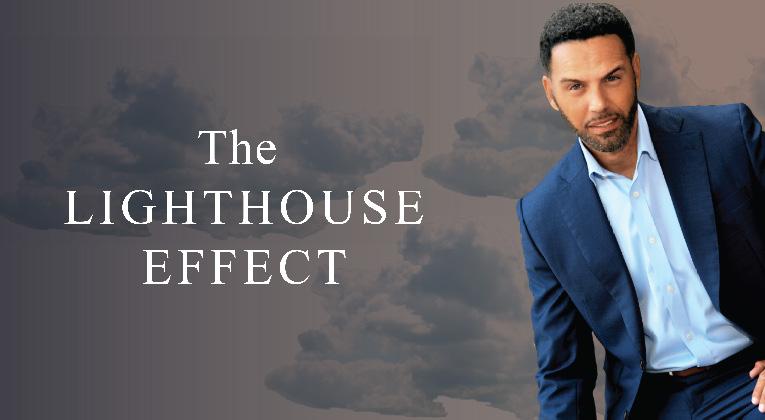
Pemberton, from A1
After constantly adapting to different home environments, he had no idea what life could look like after high school. After a recommendation from a friend, Pemberton discovered the Upward Bound program, which he said greatly helped him in his journey to Chestnut Hill. Upward
Bound is a national program run by the U.S. Department of Education to help prepare high school students from low-income families for college.
When Pemberton first arrived at BC, it was a difficult transition, he said. While fellow classmates were excited to be on their own and away from home, Pemberton struggled to relate to this newfound freedom, as
he lacked a sense of home.
“I really struggled with fitting in,” he said. “I was still trying to find home in a way because I had been in the foster care system.”
Pemberton said he was ultimately able to find home in unlikely places. He said the education he received and the opportunities he took advantage of while at BC helped him find his way. One of the places where he found a home was the housekeeping crew that he worked with during the summer after his freshman year.
“I just learned so much from them: the importance of doing the job well and with detail, being on time, and doing what you say you’re going to do,” Pemberton said. “You know they really taught me how to be a professional unknowingly.”
Pemberton found other places and groups of people that contributed to his understanding of home and community as well.
He ran track, was involved in the Black Student Forum, and helped found the Talented Tenth at BC—a supportive learning environment created by male African American students during the 1980s.
Now his son, Quinn Pemberton, CSOM ’23, is also an athlete at BC, playing for the men’s basketball team. After attending Morehouse College for a year, a small HBCU in Atlanta, Quinn transferred to BC in 2020 and walked onto the team.
Pemberton visits almost every other week and attends his son’s games to support him, something he has done since Quinn’s childhood.
“It’s so much fun to see Quinn enjoy Boston College in the same way that I did,” Pemberton said. “He is having the time of his life.”
Growing up, Quinn said his father always cared for those around
him, even those he does not know. He remembers mornings when his father would stop at Dunkin’ on the way to practice, look at the worker’s name tag, and thank them—making sure to use their name in his words of gratitude. Quinn says this is just one example of how his father treats everyone equally and with dignity.
Lessons on equity and fairness are ones that Pemberton credits to the education he received at BC. Although he was not familiar with the Jesuit tradition prior to his arrival on the Heights, Pemberton said he grasped onto its ideals quickly and found them already present in his own life.
As a young African American man not raised in the Catholic tradition and who grew up in the foster care system, Pemberton said that the Jesuits allowed him to find common ground with those around him.
“I saw those connections and I still do see those connections that you can find these common threads of humanity that are anchored around faith and service,” Pemberton said.
Pemberton said the importance of taking action was a lesson from the Jesuits that he has applied to his own life. Thinking back to his childhood,

he said this principle showed him he should support future generations, rather than dwelling on what he lost during his childhood.
“I never could feel sorry for myself as a result, because it was not really about what I had lost as much as it was about what I had the responsibility to give,” he said.
Prior to serving in his role at Workhuman, Pemberton also worked in the Office of Undergraduate Admissions at BC for 10 years.
During his time working for admissions, Pemberton worked with now-Associate Vice President for University Communications Jack Dunn who, like Quinn, said he admired Pemberton’s commitment to making connections with people.
In 2017, Pemberton started working at Workhuman as chief human experience officer. In this role, he works alongside other human resources executives to facilitate a comfortable work environment, according to Workhuman’s website.
Film, from A1
The Film Society frequently frames a month of movie screenings and discussions around a certain theme, usually highlighting different film styles. Harrison Walker, MCAS ’23, treasurer of the Film Society, expressed how the club began collaborating with FACES on the screening series during Black History Month and said that there has been increased attendance at the Film Society’s meetings during the series.
“I think [they are] really important topics and issues surrounding media and art today,” Walker said. “We go to a liberal arts college, and the point of liberal arts education is to expose oneself to a variety of different perspectives.”
FACES, an anti-racist organization run by Boston College students, works with other student groups to help them address structural inequalities and adopt an approach toward social justice. FACES has also worked with the AHANA+ Leadership Council and the Asian Caucus to produce events to uplift marginalized students and educate the broader school community.

The student organization frequently posts infographics on its Instagram
page, highlighting issues both on BC’s campus and beyond.
With the screening series, FACES also set out to explore the intersections between cinema and racism.
“There’s a huge intersection between the two,” Ivana Wijedasa, co-director of FACES and MCAS ’22, said. “I think a lot of the way that people think and the way certain stereotypes are formed in people’s minds is through media and through what is portrayed in popular culture, and a huge part of popular culture is media, film, and shows.”
The clubs began the screening series on Feb. 1 with a presentation that addressed Orientalism in media. Using prominent examples from cinema, such as Disney’s Aladdin and Wes Anderson’s Isle of Dogs, the event stimulated discussion among the attendees about the line between cultural representation through art and exotic exhibitionism of foreign cultures.
“It really goes down to a question of authenticity, I think—like who is the authorial perspective of this piece?” Walker said. “Are they trying to be authentic to the culture they’re representing, or are they trying to exploit it in a kind of perverse way?”
FACES and the Film Society, along
with Students for Justice in Palestine, presented on the roots of Orientalism in media with a presentation that included TikToks, news clips, movie scenes, and social media commentary.
The group highlighted themes of colonialism that appear in films, white savior tropes, and the marginalization of Asian people.
In a clip from the classic ’80s comedy movie Sixteen Candles, a scene shows white characters dressed in luxurious clothes looming over a drunken Long Duk Dong—a stereotypically depicted Asian character—sprawled on the ground. The white characters surround him with remarks of pity and amusement.
This clip prompted discussion of the subliminal messaging of white dominance and the infantilizing portrayal of Asian characters in entertainment in Western cultures.
The presentation on Orientalism examined the range of discourse surrounding representation of Asian people in media and the history of media that has historically used caricatures to depict Asian people.
Wijedasa expressed her own experiences with media consumption as a person of color.
“I know myself, growing up and seeing characters that look like me being portrayed in a stereotypical way, … that forms the ways that people think about those groups of people, especially marginalized groups of people,” Wijedasa said.
Both FACES and the Film Society have similar ambitions for what they wished to convey to attendees, Wijedasa said. Wijedasa said that there is still a lack of discussion about racism in a large part of the student body, including during Black History Month at BC.
“I don’t think a lot of students engage with it who are not part of any other marginalized identities,” Wijedasa said.
“We’re doing [events] all throughout the month, but you don’t usually see a lot of the BC community really engage with them.”
At the discussion, the audience, which primarily included people of color, turned a critical lens on the film industry’s exploitation of marginalized groups. Walker said that the film screenings and discussions offered students insight into new perspectives on the experiences of people with marginalized identities.
“We have a bunch of different people with different perspectives and life experiences being exposed to, potentially, something they’ve never been exposed to, … and that allows for a kind of insight into diverse experiences of the world from a different perspective,” Walker said.
Film Society and FACES members gathered in a lecture hall in Higgins Hall for a screening of Jordan Peele’s horror movie Us on Feb. 10. The audience winced and squirmed in their seats as the film delivered intense frights.
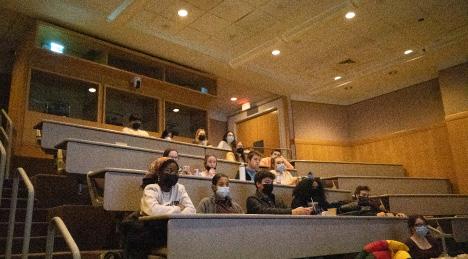
Students stayed after the film to analyze both the obvious and subtle details that Peele curates to communicate clear statements about inequality and racism
in the film. When members of the Wilson family, who are Black, realize that a clan of demonic clones have come to torment them, their calls to the police are fruitless. Attendees also noted messages about financial inequality when the Wilsons interact with their wealthy white friends.
Another discussion, held on Feb. 15, addressed the representation of Black, indigenous, and people of color who identify as LGBTQ+ in the media.
FACES representatives and Film Society president Shaun Taxali, MCAS ’22, each talked about a different film or television show that addressed the intersection of these identities.
Brian Rudolph, co-director of FACES and Lynch ’23, showed a clip from the film Moonlight, directed by Barry Jenkins, which follows the story of a Black, gay man named Chiron living in Miami. The clip showed how Chiron had kept his sexuality a secret throughout his life and the shame he felt, and the attendees discussed the complex interactions of the character’s two identities.
Read the rest of this story at www.bcheights.com
 By Paola RosaRio GRacia For The Heights
By Paola RosaRio GRacia For The Heights
A lone keyboard and microphone stood on the stage along with a starry background as people lined up outside of Robsham Theater on Saturday evening. Screams and cheers of excitement flooded the theater as the lights dimmed, signaling the start of the South Asian Student Association (SASA) at Boston College’s 24th annual culture show, titled Aasha
The masters of ceremony Arjun Garg, CSOM ’25, and Syed Hassany, MCAS ’25, appeared on stage to delight the audience with witty banter
and comical quips. They presented the meaning of the show’s title, Aasha, which means “hope” in Hindi. Sathvika Dabbi, co-coordinator of the show and MCAS ’22, said that the show’s theme spoke to the difficulties people faced during the COVID-19 pandemic.
“We wanted to make a show that reminded us that we will get through this, and we are getting through this,” Dabbi said. “And Aasha really represents how coming together multiplies that hope.”

The pair also introduced the first act of the night, a moving musical performance of the song “Nachdi Phira” by Sancia Sehdev, MCAS ’25, and Meenakshi Menon, MCAS ’25. Dazzling dance performances followed the first musical
act. Each performance was accompanied with a practice video displaying the hard work that went into each routine.
The first dance performance was a classical routine from the SASA members, which, according to the show’s program, incorporated mudras, which are hand gestures that create a common language of expression.
Next up was the Bollywood fusion dance team Masti, which performed to popular songs infused with a Bollywood sound, including “Streets” by Doja Cat and “MIA” by Bad Bunny.

Other dance styles that SASA group members showcased were Garba and Bhangra. The dance styles featured formation-heavy choreography accom-
One of the highlights of the event was the fashion show, presented by Ivana Wijedasa, MCAS ’22.
“Growing up I always struggled to recognize the elegance in my South Asian heritage due to [the] lack of appreciation and representation I saw around it,” Wijedasa said. “A show like this is exactly what I wish I had when I was a little girl. I hope it gives you a glimpse at a beautiful people and beautiful clothes.”
The show accentuated the beauty of the clothes with a kaleidoscope of color, sparkles, patterns, and flowing clothing—including salwar kameez, lehengas, chaniya cholis, and kurta pajamas.
Poetry and prose also took center stage. Tara Balan, MCAS ’25, presented
an original poem about her experience in SASA titled “SASA Exposed.” Divya Kumar, MCAS ’23, then took the stage to deliver an empowering speech and announce that a portion of the culture show’s profits would be donated to the nonprofit Give2Asia. The group will also use the profits to send support to each of the five countries that the club represents: India, Sri Lanka, Pakistan, Bangladesh, and Nepal.
The SASA executive board, choreographers, and show coordinators all received applause from the audience and praised each other for their work on the production. Ishaan Kaushal, MCAS ’23, delivered a statement about posts on Herrd two weeks ago that racially stereotyped and attacked South Asian people. Kaushal ended the show with a final reflection on the theme of hope.
“Whether you are South Asian or not, I hope you felt the same sense of comfort and love and appreciation of cultures that may have not been your own tonight,” Kaushal said.
gripped the indie music community and won multiple awards after its release in 2012. The band’s breakout hit “Breezeblocks” reached the top of indie and alternative charts,
proving that An Awesome Wave was a distinctive release.
On that album, alt-J introduced the world to lead vocalist Joe Newman’s striking tenor, the sultry beats of drummer Thom Sonny Green, and the whimsical musings of Gus Unger-Hamilton on the keyboard.
Since that debut, alt-J’s music still pops up on indie Spotify playlists. The 2014 release This Is All Yours solidified the band’s place in the annals of certified-cool alternative rock.
The group took a slightly less sultry approach to its style on what might be its best record yet: The Dream , released on Feb. 11.
The album opens with “Bane,” a serious-toned track that is actually about a can of Coca-Cola. At first, listeners get an earful of unwarranted melodrama that’s interesting to listen to but not necessarily easy on the
ears. The lyrics begin after nearly a minute.
“I sold my soul… / For a sip at school… / A swimming pool… / Ice cold black fuel…,” Newman sings.
The rest of the song reflects deeper themes of youth and religiosity but ultimately pokes fun at the gravity that some bands bring to their subjects. Sometimes a song is about the depths of the artist’s soul. Sometimes it’s about a can of Coca-Cola.
The Dream is one of the most tender albums produced in recent years. Though the songs range from silly to brutally melancholic, each is crafted with a rare carefulness.
The song "Hard Drive Gold" reverberates with deep percussion songs as Newman sings about memories of his childhood.
The standout track of The Dream is “Get Better,” a song about grief.
Newman’s characteristically comforting voice somehow becomes even softer and more comforting as he sings to his romantic partner who died, with the gentle strumming of an acoustic guitar in the background.
“Meeting at the serpentine / The beginning of Spring, you wore those yellow ripped jeans / Your look defined my 2009,” Newman sings.
The band’s sound exudes the style of the 2010s, and its lyrics express nostalgia and an intense attention to precious details. Listeners can fully see what Newman’s lover was wearing and remember exactly how they felt that same year.

The Dream is a brilliant addition to alt-J’s catalog. Listening to it is a reprieve from the darkness of everyday life—a time machine back to when things were just a little bit simpler and people wore yellow ripped jeans. n
 By Sofia TorreS Heights Staff
By Sofia TorreS Heights Staff
Eddie Vedder’s fourth solo album
Earthling offers innovative rock songs with introspective lyrics.
Vedder, the lead singer and guitarist of Pearl Jam, proves once again that he is not afraid to explore his individuality through music.
His new album, which came out on Feb. 11, includes 13 songs and surprising collaborations with Elton John, Ringo Starr, and Stevie Wonder.
Earthling touches on themes of world peace, friendship, love, and concern for the suffering environment while maintaining a bold, consistent voice in each song. Vedder contrasts the sensitivity of

his messages with hard rock but also experiments with other softer styles. His song “The Haves,” seems more like a sentimental ballad about finally reaching a sense of satisfaction when meeting the right person.








It is the perfect album to play loudly on a solo road trip with the windows down.
The first track, “Invincible,” sets the upbeat tone for the album with lyrics that express how people’s ability to love other people is a superpower.
“You are, we are / All part of this everything / So feel important / You are light, you are principle / When you love, invincible,” Vedder sings.
“Brother the Cloud” is an energizing song despite its theme of loss. It starts as calming and melodic
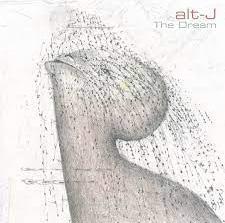
but builds up to a loud chorus that lingers in the listener’s head, making it the most-listened song on the album, according to Spotify. There are many unique rhythmic and vocal choices to appreciate on the album, making listening an enjoyable journey of exploration.
But, at times, Earthling feels like the artist’s messy personal experiment. “The Haves” is followed by “Good and Evil,” a song that feels more like rock metal than a gentle ballad, creating a harsh and confusing transition.
Given that his career as a solo artist is short in comparison to his 32-year career in Pearl Jam, Vedder is still solidifying his solo sound.
Sometimes it's impossible to not be enchanted by a piece of art. It could be the vibrant colors, the use of words to accent the piece, or the whimsical nature of the work as a whole that catches the viewer’s eye. In the case of Mikaela Savage’s portfolio, it's a combination of all three.
Savage’s unique art graces the cover and pages of “the molting medusa,” the fall 2021 zine of The Laughing Medu-
sa. The Laughing Medusa is Boston College’s only literary arts magazine that accepts submissions solely from female-identifying and nonbinary artists, according to its Instagram bio.

“When we get experimental artists like Mikaela, we get really excited because what we want to do is amplify those voices on campus and share the really interesting art that we find,” said Lexie Slotterback, Lynch ’22 and current editor-in-chief of The Laughing Medusa.
According to Savage, MCAS ’24,
she did not seriously start pursuing art until the second semester of her freshman year. She submitted her artwork for the fall zine with encouragement from Jules Digregorio, Savage’s friend and council member of The Laughing Medusa.

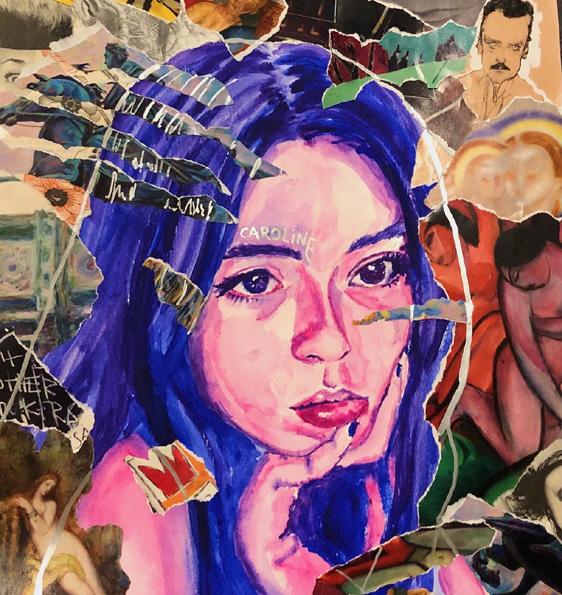
Digregorio, MCAS ’24, encouraged Savage to submit her artwork not only because of Savage’s talent, but because Savage’s art also fit the message of The Laughing Medusa, Digregorio said.
“The Laughing Medusa is all about the magic in femininity and womanhood and also kind of queerness, and I think Mikaela captures that really well,” Digregorio said. “Especially in her portraits of herself, she becomes this divine being that feels very much like the mythological inspirations of Laughing Medusa.”
The Laughing Medusa publishes a full literary arts magazine every spring, but every fall it also prints a zine, which is a shorter collection of literary work. Every zine has a different theme based around submissions, according to Slotterback.
For the fall of 2021, Savage’s artwork inspired the magazine’s council members to choose the theme of “the molting medusa,” according to Slot-
terback. In addition to the cover art, three of Savage's other submissions, all untitled, filled the pages of the zine.
The zine is typically printed in black and white, Slotterback said. But since Savage played with color in such a mesmerizing way in her pieces, The Laughing Medusa council decided to print the zine in color, Slotterback said.
Although her artwork depicts a range of images, including Alice in Wonderland–esque mushrooms, Savage specializes in portraiture. The cover art that Savage designed contains two large faces, one face in orange and one in green. Both rest on the page without eyes, surrounded by pen-ink figures and red and blue hand prints.
The words “Excuse me. We are lacking Eyeballs!” surround the figures.
“I started with the face and then went in with some ink,” Savage said.
“For this one, specifically, I liked drawing on my painting [and] writing, so here I added some words [to make it] interactive.”
Earthling reveals the artist’s talent and ambition as a songwriter, singer, Read the rest of this story at
One of Savage’s self portraits also puts words at the center. Instead of shading the features of the face in a traditional way, Savage wrote words and phrases over and over, in varying sizes and overlaps, creating depth.
Despite having a talent for visual art, Savage was more interested in pursuing ballet instead of visual art growing up. But her upbringing immersed her in an artistic lifestyle. Her mother encouraged Savage and her four siblings to pursue art while drawing inspiration from her surroundings.
“My mom would take us in the woods to watercolor, [and] we did a lot of classes like that, but I feel like I didn't really start getting into art or developing my own style until [college],” Savage said.
While Savage continues to develop
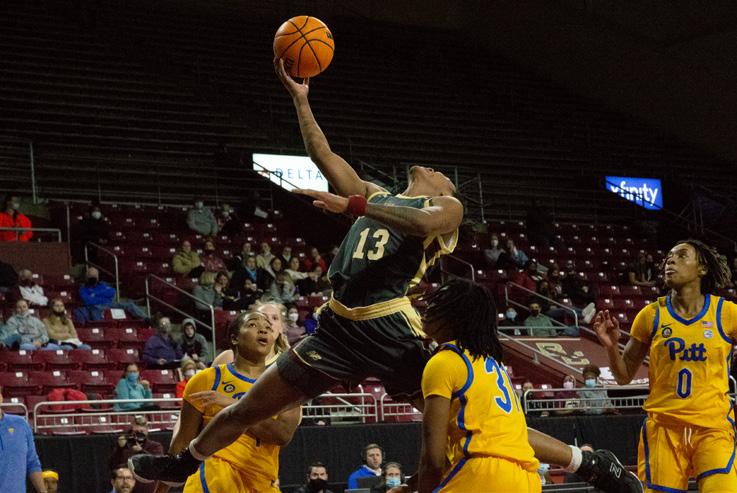
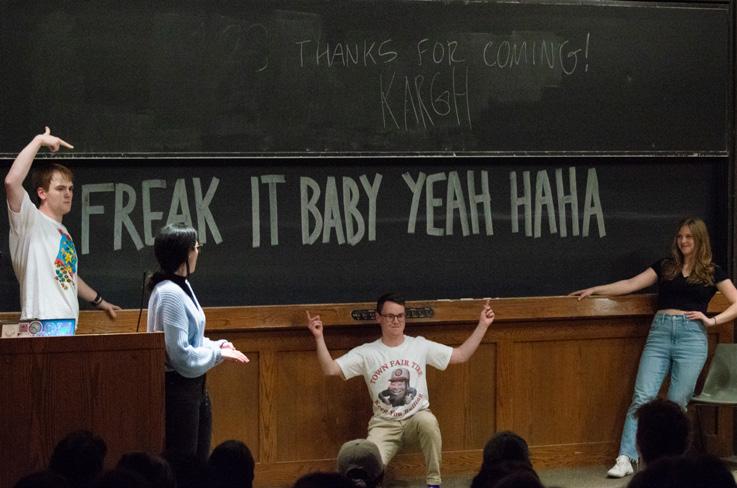
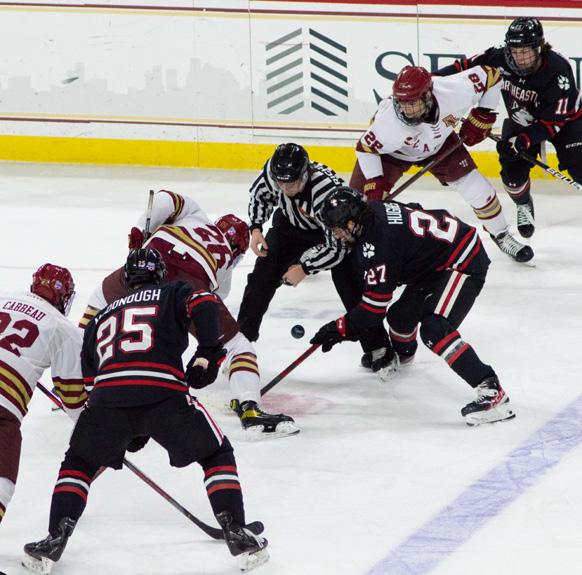
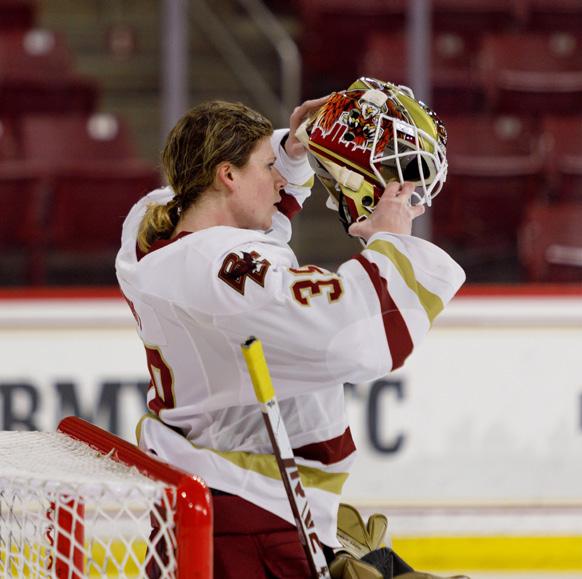

The Connors Family Learning Center (CFLC) at Boston College must clarify the requirements to receive learning accommodations and provide resources to help students through the process. There must also be greater collaboration between different resource centers on campus to help students with learning disabilities access accommodations and create a supportive learning network. It is necessary to ensure that students with learning disabilities are given the appropriate assistance and support they need to succeed in college and beyond.
Students diagnosed with a learning disability before college are able to receive accommodations through the federal Individualized Education Program Process (IEP), which provides them with a support system of educators, parents, and other students that help to accommodate their disabilities. The goal of an IEP is to meet students’ individual needs and prepare them for independence, according to its process guide. Upon entering college, however, this network dissolves. Postsecondary institutions are not required to offer the same level of comprehensive support or individualized plans for students. Students are left to their own devices to provide the University with updated documentation for accommodations and rebuild this support network.
Students at Boston College who are diagnosed with a learning disability, Attention-Deficit Disorder (ADD), or Attention-Deficit Hyperactivity Disorder (ADHD) currently have access to accommodations through the Connors Family Learning Center (CFLC). Accommodations are provided on a case-by-case basis and may include extended testing times, test sites with reduced distractions, or early class registration pick times.
The process of receiving accommodations, however, fails to take into consideration many of the symptoms of learning disabilities, ADD, and ADHD. Many students with learning disabilities, ADD, and ADHD have a difficult
time paying attention, following directions, and staying organized. The CFLC’s website references vague and inconsistent requirements on multiple pages, necessitating proof of high school and standardized testing documentation on one page, and then clarifying that these are only requirements “if applicable” on another. For students struggling with organizational skills and maintaining attention, scattered and poorly communicated information is a huge barrier to access.
According to the CFLC website, “to receive accommodations on the basis of ADHD, an assessment that measures the student’s current functional impact of ADHD on learning and/ or testing is required.” These guidelines are too vague. The University should list the specific evaluations needed, where to receive them, and how to access financial support. For example, providing information about medical professionals who have worked with BC students in the past would help students take the first step in receiving accommodations. This would give students a clear path to follow. Receiving accommodations at BC should not be a matter of knowing where to look.
Explicit evaluation requirements are especially important for students who have recently been diagnosed and are unfamiliar with the process of receiving accommodations. Though ADD/ADHD is widely perceived to be identified in early childhood, there are many young adults who function up to a certain point without realizing their symptoms until they hit a ceiling—such as attending college. These students may find themselves struggling to understand their condition and overburdened with the task of learning how to ask for help.
This process is made even more difficult for students who feel they may be struggling with a learning disability or ADHD, but do not know how to get diagnosed. Students in this situation should be redirected to University Counseling Services (UCS), where they can sign up for a
same-day consultation to receive further guidance. UCS’s staff and services are also strained, however, and this can result in students falling in between the cracks of different resource centers on campus.

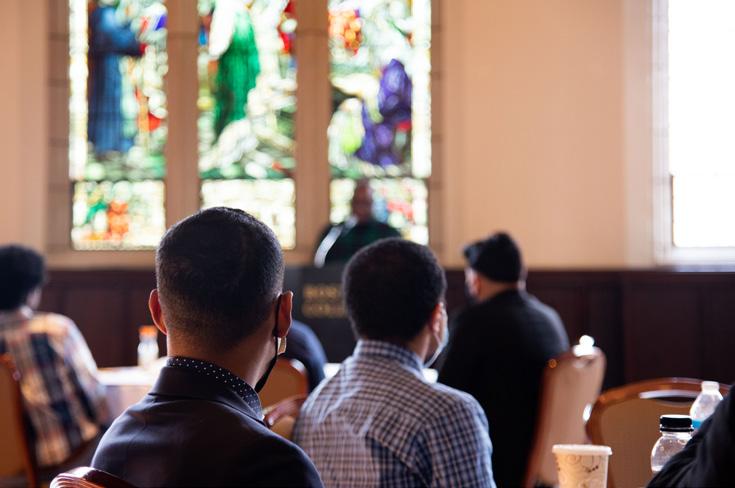
This disconnect between UCS and CFLC reflects a misunderstanding in the nature of learning disabilities, ADD, and ADHD. There is distinct overlap among learning disabilities, ADD, ADHD, and other mental health conditions such as anxiety and depression, and they should not be regarded as mutually exclusive.
Accommodations are only half of the battle. Understanding one’s condition, developing healthy coping mechanisms, and mastering self-advocacy techniques are crucial to a student’s success during college and beyond.

Professors and researchers within the Lynch School of Education and Human Development, the Disability Services Office, UCS, and CFLC all provide resources to help students struggling with learning disabilities, ADD, or ADHD. While there may actually be healthy working relationships between these organizational bodies to evaluate a specific situation, this communication is not transparent to the student body.

Beyond clarifying the accommodations process and expanding its resources, the University must work to bridge the gap between these organizational bodies on campus. Within the BC community, existing systems like UCS and CFLC should work in conjunction to create more comprehensive disability services and improve communication with students. Including resources from across both websites will ensure that students are aware of all of the programs and accommodations available to them, as well as the staff members who can help. While there is always room for more resources, much of the support that students need is already here on campus, waiting to be fully utilized. Increased collaboration between UCS and CFLC will help ensure that BC successfully cares for the whole person and fulfills its Jesuit mission.
19, 2022.
typical fears, I’d like to remind you of a natural spectacle you may overlook: moss.
Waiting in the recesses of your awareness, mosses abound. To look at the intricacies of a moss carpet and feel content with this simple, small marvel, you stop for a moment, and you remember what it feels like to stop.
contexts). Bryophyta cultivation has no North American analogue. In the Northern Forest of this continent, we live out relatively mossless lives—unless you seek them out diligently. Likewise, we must seek peace, especially at such a college, in such a city — we must seek moments of pause.
To begin, I’ll assume you are like me. This is to say that you’re a neurotic, and you just happen to be the type of neurotic who dreads decision making. Simple questions of either/ or—either you could take Painting I: Foundations next semester or that 3000-level required-for-your-major class—are life-changing confrontations. These confrontations come with inevitable realities (decide now: happy and artistic or bored and realistic), and you find these interactions quite unpleasant.
Let it suffice to say you applied to 18 colleges to “keep your options open,” and you haven’t opened the transfer portal yet on the Common App, but you certainly haven’t not thought seriously about doing so. After all, you want the very best you can get out of college—isn’t that what any college student should want? You fear deviating from this ideal.


Your fears are not unfounded. Your parents worked hard to pay for your tuition, and the thought of not graduating summa cum frappe-latte inspires carnal and instinctual fear. Perhaps your parents both work consuming Wall Street jobs so you walk around this college with the omnipresence of familial expectations on your mind to be met. Perhaps the question of your parents’ occupation, for you, is less a friendly get-to-know-you exchange and more an invasion of privacy — an accusation that no, you do not come from a family of State Department workers or banking millionaires. All this is to say, you, fearing what you fear, are not an abnormal student at this college.
If you are a typical student with these
And so now you still haven’t declared your major, and you still don’t know how you’re going to pass that business statistics exam (in no way did I sign up for math), but maybe you are, now, a little more aware of the bryologist’s plight: lost too often in worries, we simply don’t pay enough attention to the momentary joys of moss.
Your moment of pause ends with this thought, and you remember those important things you scheduled time today to worry about. You remember, with a rather sudden desperation, how humiliating it would be if Julia really doesn’t want to be in the eight-man (she hasn’t sent anything in the group chat, ever) and she’s just been acting nice this whole time, and wouldn’t that break up the rest of the group?
To these concerns, please indulge a metaphorical reply:

If you are overly neurotic, you are attentive, and here is the hidden key to that sense of ease which pause invites. You take that time to rest and to study the mosses, and you sit back in that well-loved seat of childlike wonder. Though you toil and inhale coffee in O’Neill and hope your scribbled philosophy notes seep into your brain, mosses mass patiently and calmly at the bases of trees and on the roofs of bus stops.
Ecologically, your intense fascination with the moss-phenomenon is well-founded. Mosses are small, usually clumped, non-vascular, flowerless plants belonging to the division Bryophyta. They grow only in areas which meet a specific humidity, shade, moisture, and substrate criteria.
In Japan, Moss gardening has long-standing cultural significance (especially in monastic
I’ll spare you any more undo narrative musing and assume that you’re smart, capable, and that—by evidence of your attending Boston College—you have been able to trust your capacity for rational thought to propel you through life. It is your specific tendency toward deep thought that also causes you to overthink. Notwithstanding your intelligence and your diligence, I suggest to you that you become more invested to look unto the mosses and let that calm speak to you. Wherever you may find them, sit in amazement at their growth—entirely unconcerned with your anxieties—and recognize how you, too, are growing. Study the mosses of your own life—those unrealized moments of joy always present.
Thus far I’ve given you this story in reflections and metaphors of what I am actually describing. If you’ll entertain one last reflection, consider the words of Philippe Petit, the man who tightrope-walked between the World Trade Center, on fear:
How to Silence the Music of Fear:
“Never cover your ears. On the contrary, face the music and explore its layered construction … note after note, extract the silences that fell in the staves. Once the silences are caught, walk away with them swiftly and peacefully.”
I ask you, dear neurotic, to do something similar. Amid your swirling anxieties, look inward toward the marvel of your own resilience. Look unto a world that abounds in mosses, growing patiently, steadily, perpetually, despite your struggles, despite fears that terrify.
Weather never stopped Boston College students from enjoying the wonder that is White Mountain ice cream. And now that the weather seems to be warming up just a tad, those study break ice cream runs are beginning to make more and more sense. But don’t let the sporadic weather throw you off your game, Eags. If ice cream is how you fuel your study sesh, then bundle up and get yourself over to White Mountain, stat.
ing, over and over, why you feel like you’re not enough. Until it’s not a question, it’s a fact—you’re not enough.
Starting college gives you an opportunity to reinvent yourself. We’re all trying new things like sneaking our way into a Mod party through a bathroom window, joining the Outdoors club, or dying our hair blonde, auburn, or bright red—anything far from what our parents would approve of. I’ve often heard people say they want to be more confident so they’ll feel good about themselves. But, what do you do when you put on that outfit that gets you numerous compliments, take the risk you’ve always wanted to, go to the gym consistently, and still feel like crap about yourself? We’re led to think that self-confidence will result in self-worth when that just isn’t the case. Confidence, if anything, could lead to an inflated ego if not kept within reason. On the days where you feel your worst, you still deserve food, kind words to yourself, and assurance that the value of your existence goes beyond looking attractive.
Easier said than done …
When everyone around you is beautiful, blonde, slim, blue-eyed, white, and always happens to be ready for a workout, how do you grow confidence? I realize I just described a stereotypical white girl, but that doesn’t take away from the fact that this is what young girls of all races have seen portrayed as beauty in the mass media. To keep it in a smaller scope, this is what students at BC picture to be the epitome of a BC woman. And if you don’t fit this mold you might be left question-
I’m Chicana. But as my Mexican parents would say, “tengo el nopal en la frente (I have the nopal on my forehead).” My physical appearance screams Hispanic. I’ve always been surrounded by people who look like me and who sound like me. Now, I’m at a predominantly white institution (PWI) where my last name isn’t pronounced correctly until the third try–Piedra, Piedra, Piedra. The culture shock hit hard and altered the way I viewed myself. I saw myself as an average girl with some quirkiness here and there—like my loud laugh, my not-so-small nose, and my hairy arms. Here, my quirks no longer seem like something that keeps me uniquely beautiful. They seem like defects I need to strip myself of. Here, I feel below average.


¿Dentro de esta universidad donde queda la hermosura de mis curvas, de mi pelo grueso y negro, de mi nariz no tan pequeña, o de mi piel de miel?
You may not have understood my previous statement. Maybe there was some type of disconnect? This is the disconnect I have felt on campus. For you it was a few seconds. For me, it can last for weeks on end.
I knew the beauty of my features within me, but it didn’t feel like it when I first arrived at BC. I walked around these halls thinking I’m not worth looking at. Days and weeks went on where I’d look at the white girls wishing I had their features to feel pretty. I’d like to say that it was as easy as a mindset change, but it wasn’t. The fact is I can’t change who I am. When attending a PWI as a person of color, it’s easy to suffocate yourself in thoughts that make you question your validity on campus and your worth.

The reality is, yes, you will be exposed to more
white people than people of color at BC as you walk to your next class. There are, however, more people like you on campus, especially at the Thea Bowman AHANA and Intercultural Center. I found strength in familiar faces, familiar mannerisms, and backgrounds I could relate to, like being raised by immigrant parents. Being a minority doesn’t equate to being inferior physically or intellectually.
There’s something to be said about my gloriously muddy eyes, the shielding hair on my arms, my style, the resilience coursing through my veins passed down from past generations, my accent, and my way of being. It’s not ugly. It’s not uncivilized. It’s not something to look down on. I’m not ugly. I’m not uncivilized. I’m not not someone to look down on.
My words might not heal your aching confidence or self-worth, but I hope they—even for a split second—gently ease you into a hug of comfort, safety, and empowerment. I’m not white, and I am pretty.
La hermosura de tus curvas? Aquí está.
La hermosura de tu pelo grueso y negro? Aquí está.
La hermosura de tu nariz? Aquí está.
La hermosura de tu piel de miel? Aquí está para quedarse.
La hermosura de tu piel oscura como la noche? Aquí está para quedarse.
Y la hermosura no es lo suficiente. No es todo. Espero que encuentres consuelo en tu cultura y en la relatividad de nuestros sentimientos. Hay belleza en nuestra cultura. Cuando no puedas ver esa belleza, tu belleza, espero que sepas que todavía guardas valor.
Almost as magically as the sunny weather appeared in Boston, campus tours started back up again. Not a walkway between buildings is devoid of the presence of large circles of Baby Eags and their parents, listening to their tour guides sing BC’s rightfully-earned praises. The hope, of course, is that those potential Baby Eags will take the leap and join the rest of their flock on the Heights next fall.
Ever since that first random 60 degree weekend, the weather has been going through an identity crisis. One day she’s hot and the next day she’s cold, and screaming wind. Sometimes she’s even hot and screaming wind. Some may see it as a sign of warmer days ahead, but others are feeling the effects of the weather’s tempestuous mood deep in their souls, as the days of winter continue to stretch out ahead.

As students across the country gear up for a long weekend of rest and relaxation in honor of President’s Day, BC students alone prepare to walk into classrooms on Monday. In the grand scheme of things, one more day off this semester can’t possibly detract from the academic quality at a prestigious institution such as BC. We can only give the administration the benefit of the doubt and hope that by not giving us this day off, they’re saving our “time-off mindset” for when it’s truly necessary: Marathon Monday.

Basketball, from A1
Ford was next. Though Ford’s playing time decreased this year, her highlight reel has plenty to show, as she started 17 games her junior year and finished second on the team in rebounds that season with 107.
On Sunday, Ford contributed four points and four rebounds in nine minutes of action.
Then came Dickens. Dickens joined the 1000-point club earlier this season and has seen significant minutes all four years at BC. A career 37.3 percent shooter from three, Dickens has made 190 three-pointers in her collegiate career so far.
Dickens finished with 11 points, six rebounds, five assists, and went 2 of 4 from 3-point range on Sunday.
Dickens’ back-court counterpart Garraud was next. As a junior, Gar-
raud was named to the ACC All-Defensive Team and led the conference with 1.9 steals per game. Garraud has totaled 762 points, 282 assists, and 170 steals at BC.
On Sunday, Garraud totaled eight points, six assists, seven boards, and two steals.
“We came in with each other and built this from the ground, through the ups and downs,” Garraud said.
Last to be honored was Soule. Soule has scored 1111 points and has grabbed 520 rebounds on over 50 percent career shooting. Earlier this month, Soule was named to the Cheryl Miller Award Top 10 Watch List. This season, she is one of 35 players in the country to average at least 15.7 points, seven rebounds, 1.5 assists, and one steal.
Sunday was no different for Soule, as she scored 17 points on 50 percent shooting. She was seemingly everywhere, diving on loose balls and drawing offensive fouls.

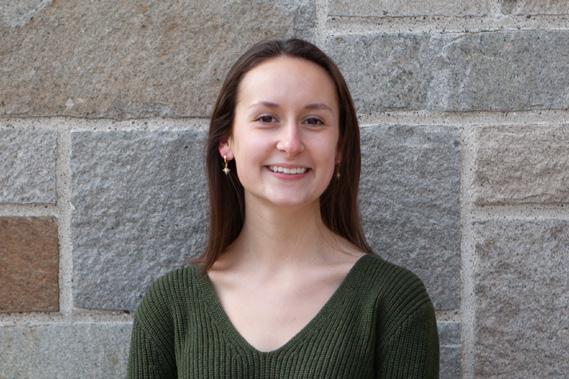
The Eagles remained in control the entire game, leading by as many as 22 points in the third quarter. They scored 17 points off nine Wake Forest turnovers.
BC shot 90 percent from the field in the fourth quarter, executing on nine of its 10 attempts.
The win over Wake Forest brings
the Eagles back to .500 in the ACC with games against Duke and Syracuse left in the regular season. As of now, ESPN has BC as one of the “last four in,” meaning it is on the bubble of making it into March Madness.
“We have to go dancing,” Soule said. “It’s not even a question of if. We have to do it.” n
Intercollegiate
began in 1852 when the Harvard and Yale crew teams raced on Lake Winnipesaukee in New Hampshire. Formalized participation in baseball, football, and track and field continued to gain popularity in the following decades. The first American football game took place in New Brunswick, N.J. on Nov. 6, 1869 when Rutgers took on New Jersey— which later became Princeton—in front of an audience of 100.
inched back and scored three runs in the bottom of the eighth to complete an 18–17 victory.
Boston College Austin Peay 17 18
Boston College Austin Peay 9 10
Boston College baseball opened its season with a three-game series against Austin Peay, beginning on Friday. BC (1–2) faced the Governors (2–1) on Friday, Saturday, and Sunday.
The Governors scored one in the bottom of the first, but BC’s hot start continued in the second inning. Sophomore Cameron Leary hit a 460-foot bomb—his second home run of the game—with a runner on first and third to put the Eagles up 6–1.
By the end of the top of the fourth, the Eagles held an 11–1 lead. But the tides turned in the bottom of the inning.
The rapid decline of BC’s bullpen allowed for the weekend's high-scoring games. The Eagles’ pitching staff struggled to put a pitcher on the mound capable of preventing such a comeback. Playing a total of seven pitchers, closer Joe Vetrano took the loss on a disappointing walk-off that felt like a repeat of Saturday’s game.
As an increasing number of collegiate sports programs emerged across the country, the Intercollegiate Athletic Association of the United States—now known as the NCAA—was formally established in March 1906 to reform the rules of play for various sports and enforce eligibility criteria for student-athletes. In 1964, colleges and universities began awarding student-athletes with athletic scholarships in recognition of their significant athletic commitment and the prestige and notoriety they provided the school.
Boston College Austin Peay 8 3
After a season-opening 8–3 win on Friday, the Eagles suffered back-to-back one-run losses, falling to Austin Peay 10–9 on Saturday and 18–17 on Sunday.
After splitting its first two games of the series, the Eagles showed flashes of hope on Sunday. A hot start in the first inning, including a single followed by a home run, put the Eagles up 2–0 in the top of the first.
The Governors chipped away at the Eagles’ lead by scoring eight runs in the bottom of the fourth, three runs in the fifth, and scoring on a wild pitch in the bottom of sixth inning. The Eagles scored two runs during Austin Peay’s streak, but the Governors had tied things up at 13–13 by the end of the sixth inning.
As if it wasn't already a high scoring game, BC reignited its offense, scoring four runs in the top of the seventh inning. But the Governors once again
On Saturday, BC’s game lasted just over four hours, but the Eagles came up short. BC had an 8–0 lead that Austin Peay cut to 9–4 after six innings. The Governors tied things up in the ninth inning, and Gino Avros walked with the bases loaded in the 10th inning to secure the victory.
Read the rest of this story at www.bcheights.com
But what has been the biggest change since that first crew regatta in 1852?
The simple answer is revenue. Football and men’s basketball are the leaders of the industry, generating billions of dollars of revenue each year. The athletic departments at Texas and Texas A&M both make more than $200 million of revenue each year, and all of the top-20 revenue producers in the NCAA each make over $130 million a year. It is time that student-athletes are rewarded in a way that is reflective of these increasing revenues.
Northeastern Boston College



Coming off its first win in its last 13 games, a victory in the opening game of a home-and-home series against No. 13 Northeastern, Boston College men’s hockey had momentum for the first time in months.

But led by their defense and special teams units, the Huskies (20–10–1, 11–7–1 Hockey East) turned the tables Saturday, walking away from Conte Forum with a 4–1 victory over BC (11–16–5, 6–11–3). The Eagles played with intensity but failed to capitalize on any of their seven power plays.
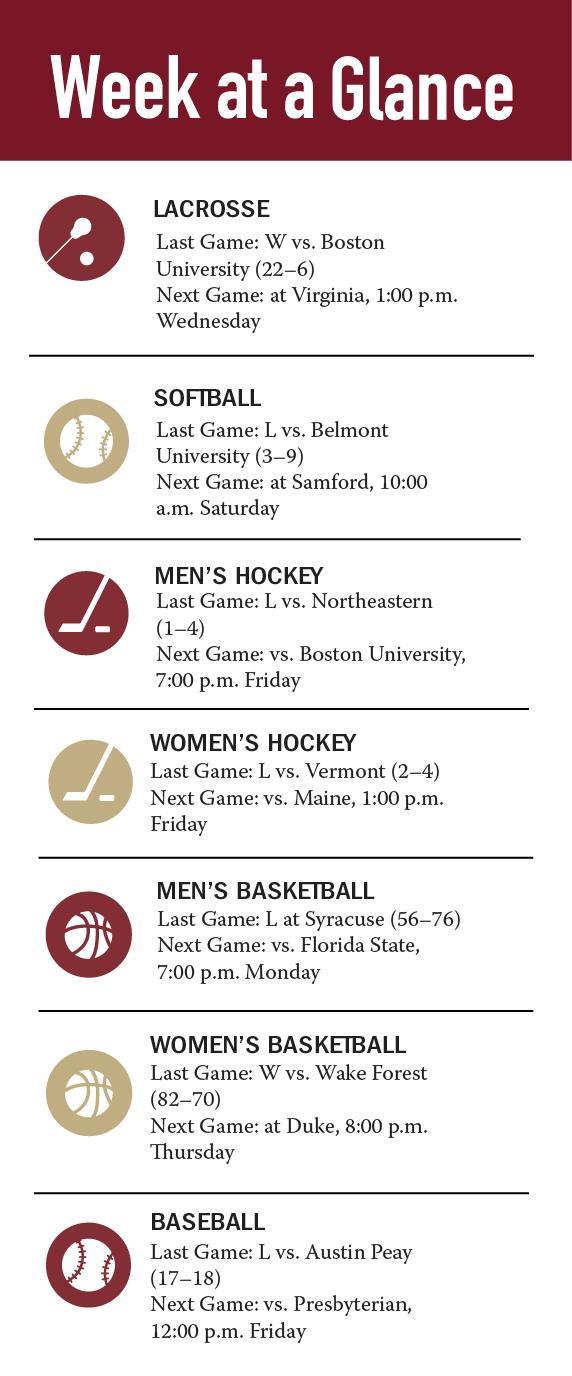
“[It was] a disappointing game for us tonight,” BC head coach Jerry York said in his postgame press conference. “You
know, coming off an emotional, wellplayed game at Matthews Arena, we’re back home, and we just didn’t have an A-level game.”
On Friday, BC’s Colby Ambrosio scored within the first 16 seconds of the game, but the second time around, it was Northeastern forward Aidan McDonough who scored off the opening faceoff. McDonough netted a shot under the crossbar to put the Huskies up 1–0 in Saturday’s opening 23 seconds.
Both teams were evenly matched throughout the first frame, and they both failed to capitalize on power-play chances. The Huskies maintained a 10–7 advantage in shots on goal and won 14 out of the period’s 19 faceoffs.
With five minutes passed in the second period, the Eagles failed to clear the puck out of their defensive zone, and Northeastern’s Riley Hughes found Matt DeMelis stationed in the crease. DeMelis poked the puck past Eric Dop for his fourth goal of the season to give the Huskies a two-goal advantage.
An elbowing call sent BC on the power
play one minute later, but Northeastern’s penalty-kill unit showcased its defensive strength, and the Eagles went without a single shot on goal.
In the 10th minute of the frame, BC went on its third power play.
Ambrosio fired a bullet that screamed off the post, and Marshall Warren went to bury the rebound, but Northeastern’s Tyler Spott blocked the shot. The Eagles went without a shot on goal for the second straight power play.
BC’s sole goal of the night came at even strength late in the middle frame. Patrick Giles weaved through the slot, splitting the defensive pair, and elevated a backhand shot to beat Northeastern goaltender T.J. Semptimphelter and bring the Eagles within one goal.
Fifteen seconds after Giles’ goal, BC went on the power play again, but Semptimphelter made three saves to keep the Eagles trailing.
Read the rest of this story at www.bcheights.com
The commercial industry of college sports consists of highly paid coaches and administrators, multimillion-dollar facilities, national television contracts, massive endorsements from advertisers, and enormous revenues from ticket sales. Universities across the country have ultimately been forced to decide if they are institutions of higher learning with a football subsidiary or a football enterprise with a student body fanbase.
USA Today’s annual review of the compensation of coaches found that the average total pay of FBS coaches in 2021 was $2.7 million. Alabama head football coach Nick Saban—the highest-paid coach in the FBS—makes $9.3 million each year, and Clemson head coach Dabo Swinney makes $8.3 million a year.
There was a time when coaches weren’t paid much more than professors. A study from the National Center for Education Statistics reported that the average salary of professors in 1970 was $18,000. Former Notre Dame head coach Ara Parseghian earned $20,000 in